Madness and Memories. Chelsea Classic Dinghies.
There is a theory that “You shouldn’t race offshore in a boat that is shorter (in feet) that your current age”. This sort of makes sense but requires that you get a lot richer as you get older.
I’m developing another theory which is almost the inverse. It goes something like this…. “The amount of pleasure per dollar gained from owning a wooden boat is inversely proportional to its length.”
Last weekend on the beach at Chelsea, a Port Phillip beachside suburb about 45 minutes south of Melbourne CBD, this concept was demonstrated to be at least occasionally true as the Chelsea Yacht Club Classic Dinghy gathering unfolded.
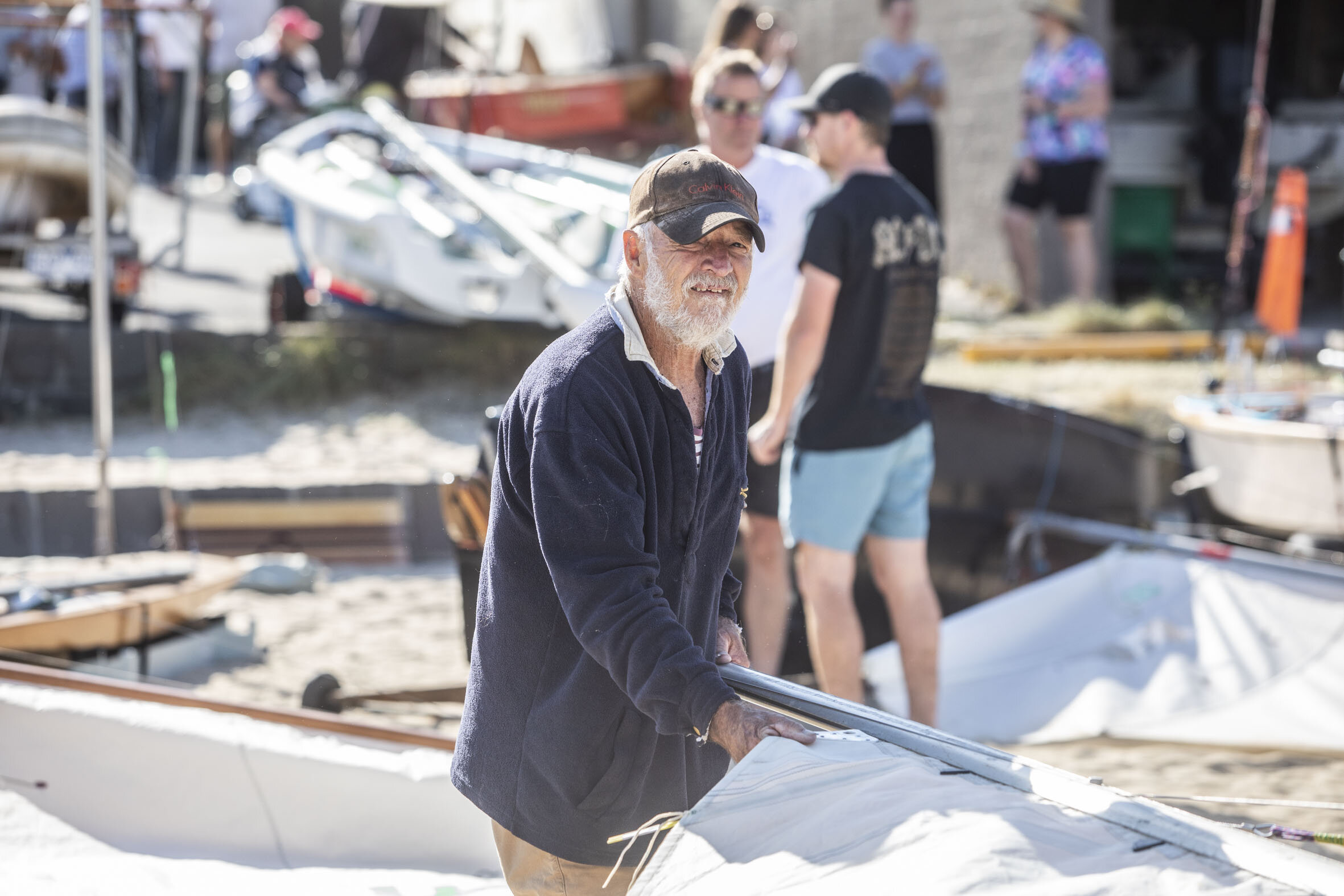
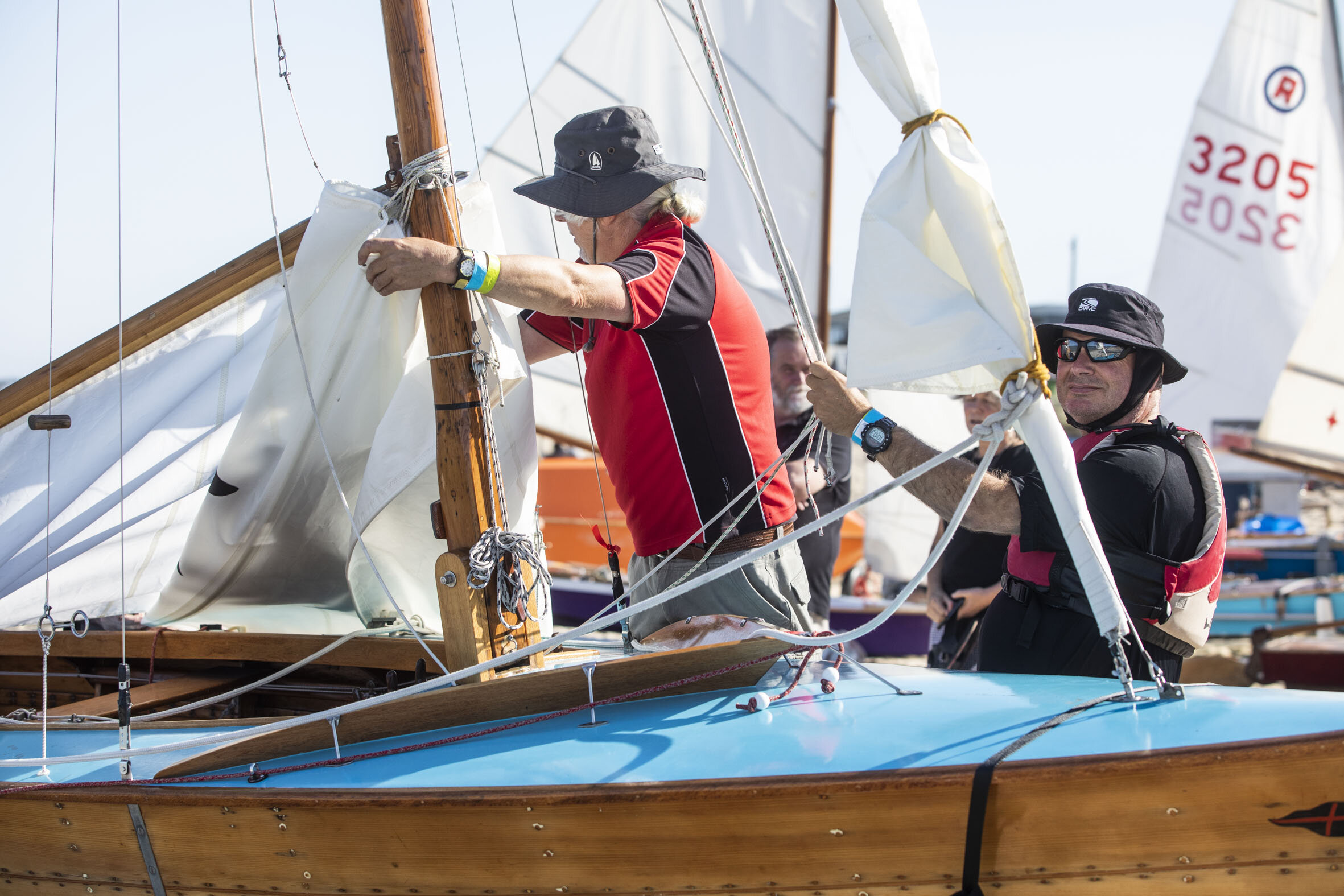
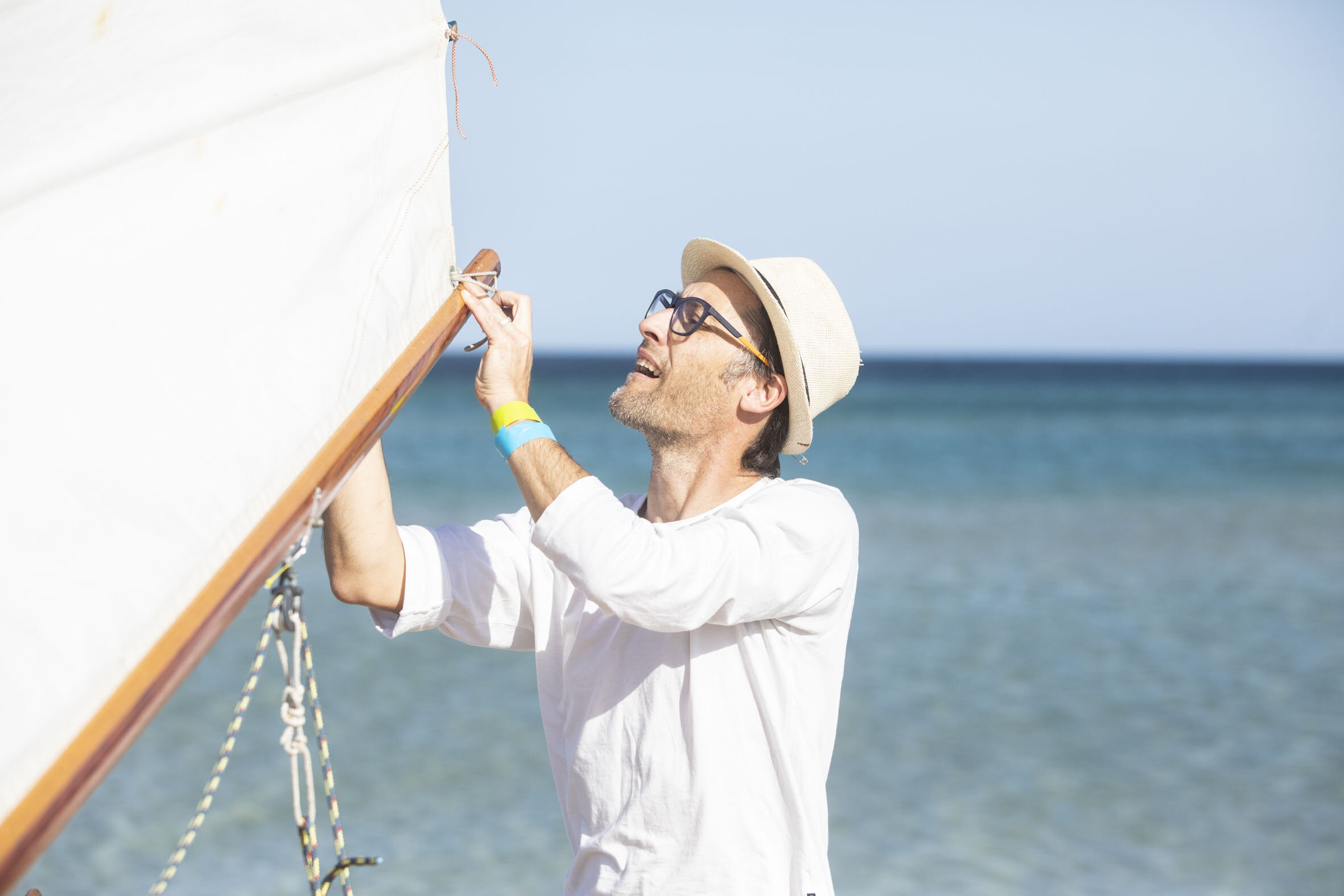
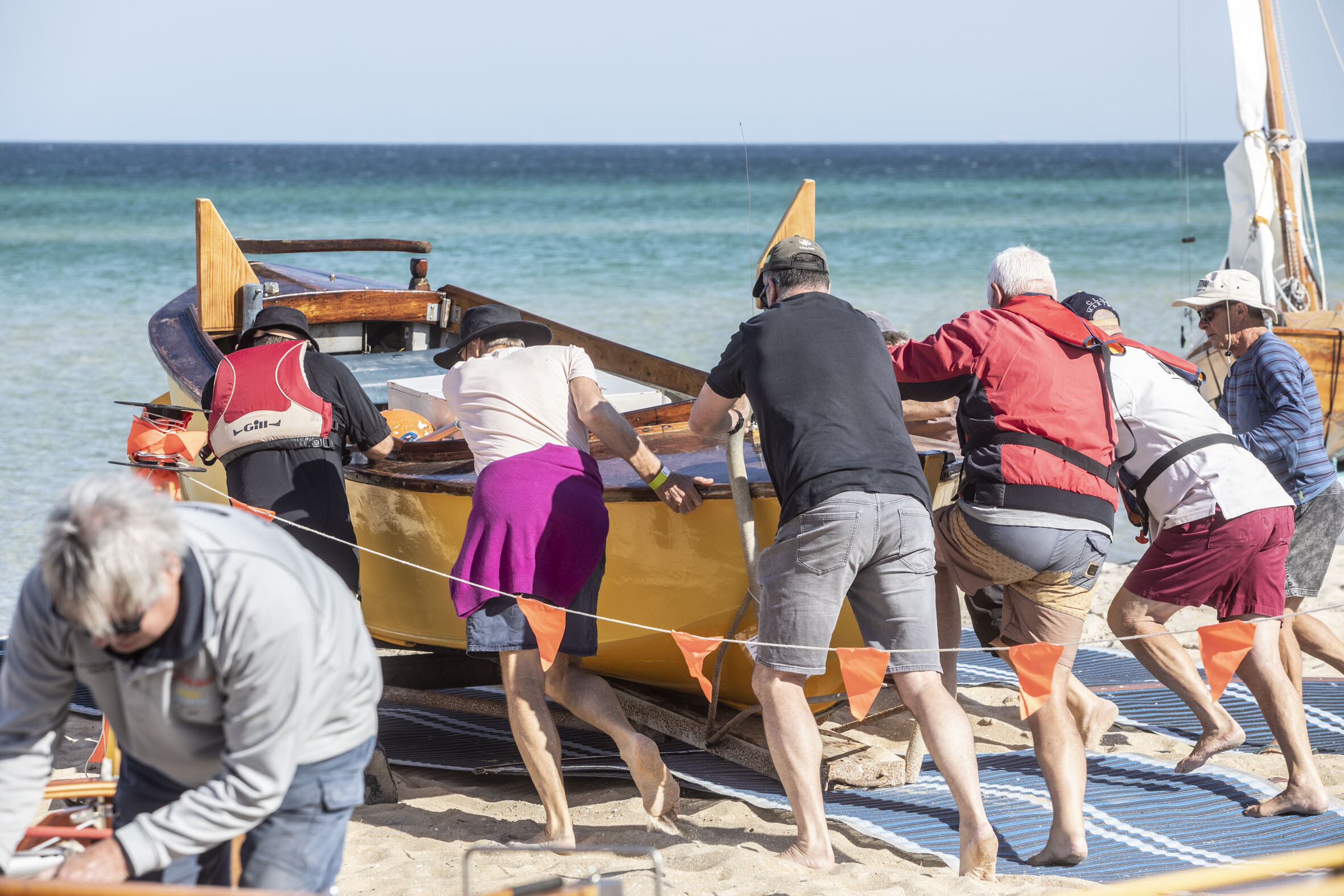
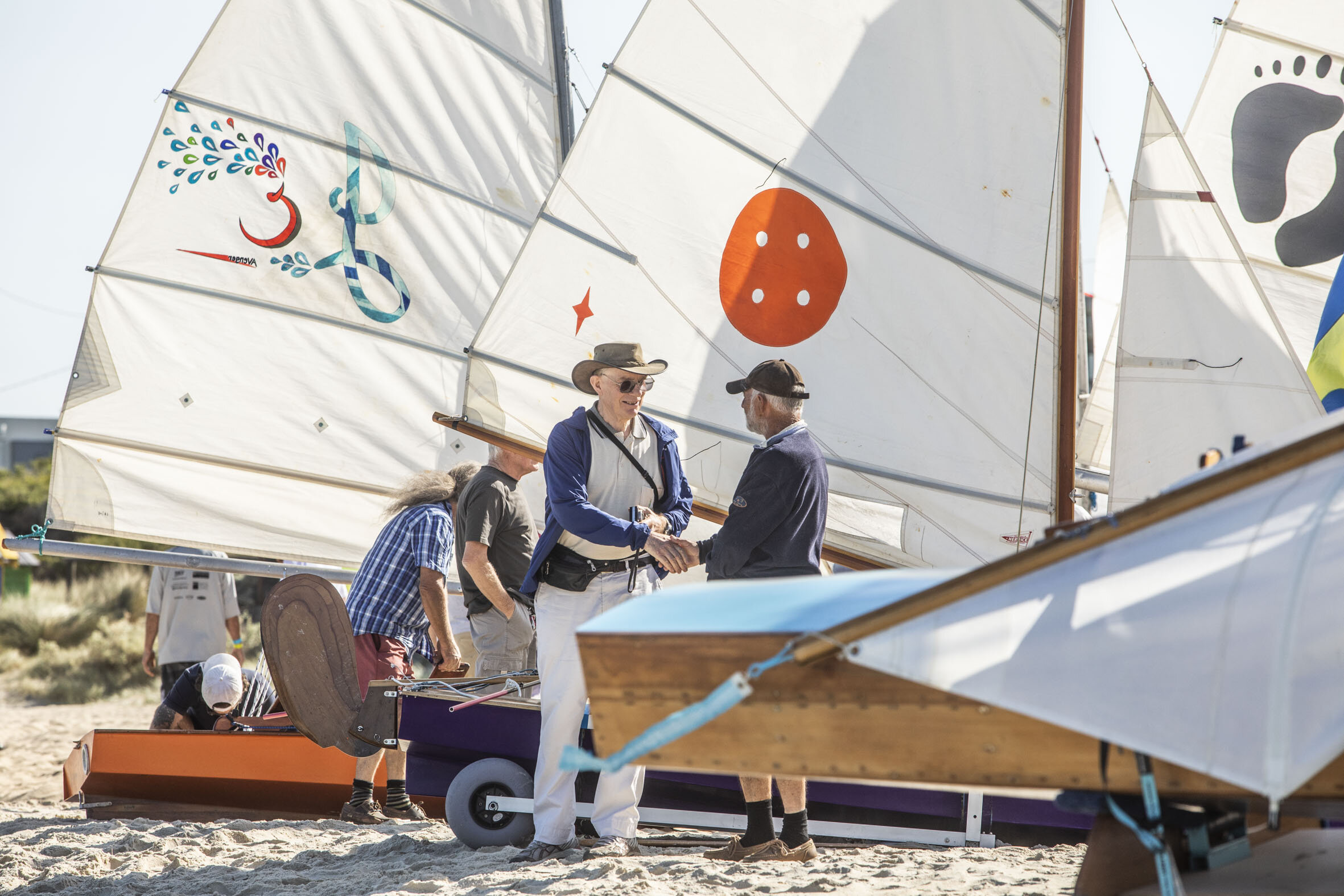

There was buzz on the beach as the entrants rigged their craft. The offshore 20+ knot gusty easterly meant that the water was flat, but the conditions were always going to be tricky for many of the fleet. However, the enthusiasm for the history and a rejuvenated future for many of these craft was something I have rarely seen at a wooden boat gathering. The dream of finding, buying, restoring and sailing a piece of Australia’s sailing history is absolutely achievable at a reasonable cost with lots of these dinghies, and so many of the impediments to restoring larger keel boats aren’t there. It can be done in your garage or back yard, there are still many great projects ready to be found and there is an existing community and network ready to advise, help and generally support your project.
Perhaps the best way to sum up the rally is to give a quick cross section of the entrants.
The Moth –“The ultimate development class with very Australian origins.”
There were four Moths on the beach. Mark Rimington, one of Melbourne’s most experienced sailmakers gave me some background on the class. In 1928 Len Morris built a cat rigged (single sail) flat bottomed scow (horizontal bow rather than the "normal" vertical bow) to sail on Andersons' Inlet at Inverloch, a seaside resort 130 kilometres from Melbourne. The scow was hard chined, 11 feet long, with a single 80 square feet mainsail. The craft was named OLIVE after his wife and is now hanging inside doorway of Albert Park Yacht Club. The construction was timber with an internal construction somewhat like Hargreave's box kite. OLIVE’S performance was so outstanding, that a similar boat WHOOPEE was built. Len Morris then sold OLIVE, and built another boat called FLUTTERBY, and with those three boats, the Inverloch Yacht Club was formed. Restrictions for the class known as the Inverloch Eleven-Footer class were then drawn up, with the distinguishing characteristic that of being not a one-design boat but rather that of a boat permitting development within the set of design parameters. The class has gone on to be the world’s premiere single person development dinghy…and it all started here in this little corner of the world.
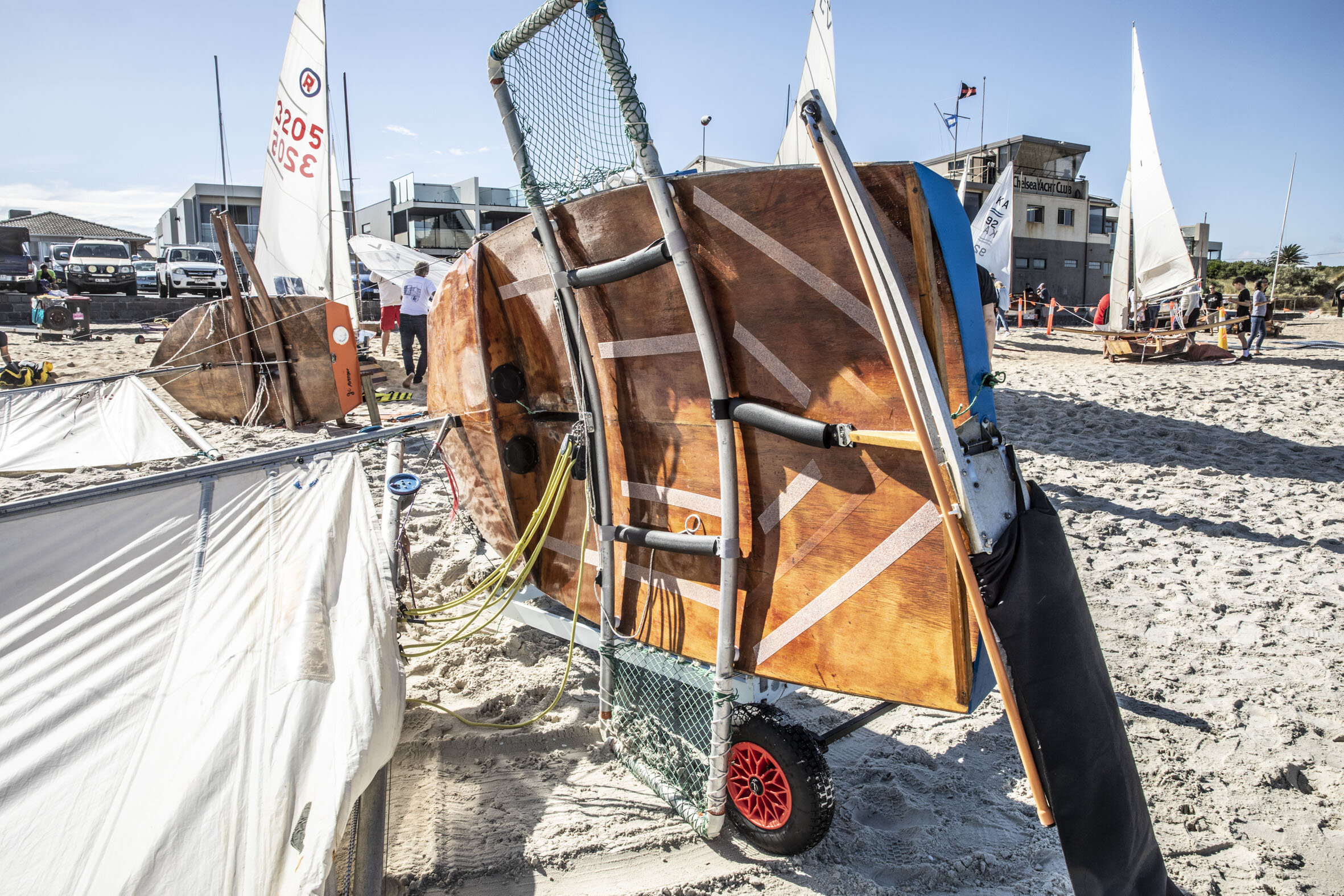
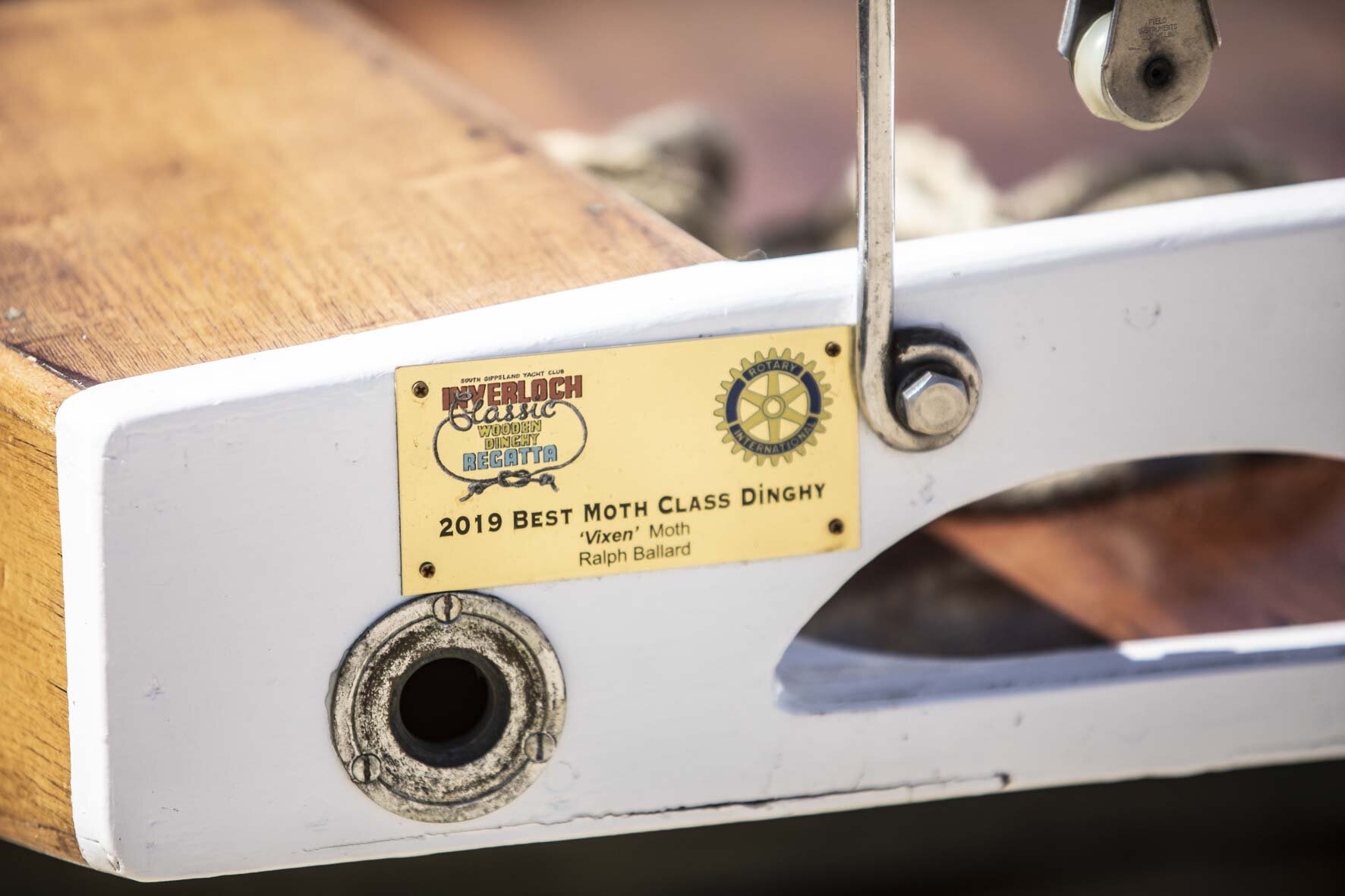
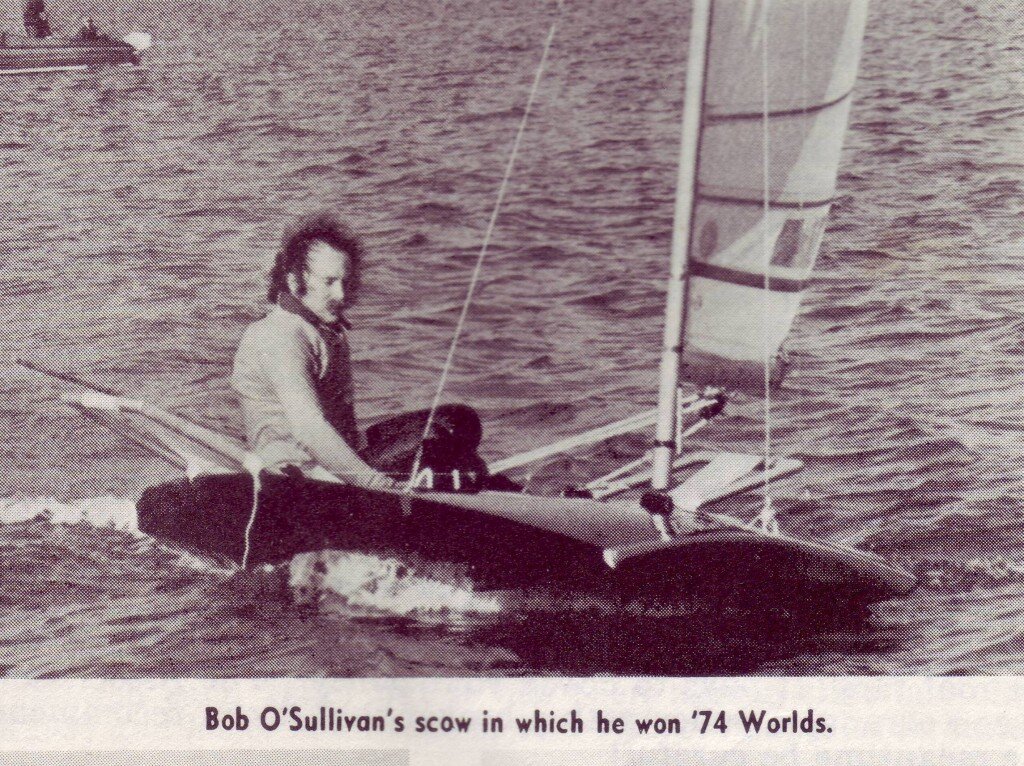
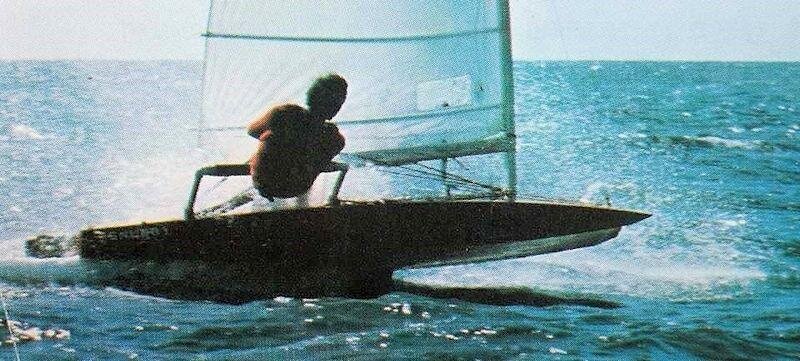

The Vee Jay (Vaucluse Junior)-“Second to none for teaching skiff-style boat handling skills to younger sailor”
The VJ was the brainchild of Sil Rohu who was a founding member of the Vaucluse 12 ft Amateur Sailing Club in 1926 and who owned a prominent sporting store in Elizabeth Street Sydney from 1919 until his death in 1945. Sil was a sailing boat and fishing enthusiast, and his gunsmith and fishing supplies sports store ‘Sil Rohu’ became known throughout the country due to Sil’s entrepreneurial and promotional flair. Charles Sparrow said that Sil would often bring out American film celebrities for deep sea game fishing promotional events and had a knack for this kind of promotion.
During a short period of illness in 1931, Sil crystallised his vision for a sailing boat which would be designed specifically for children and teenagers as a training and racing craft.
Prior to the invention of the VJ there were no sailing boats that were designed specifically for children and teenagers so they could learn to sail. Boys would sometimes learn to sail as ‘bailer boys’ in the open skiff classes, but others would venture out onto Sydney Harbour in home made ramshackle ‘sailing canoes’ made from roofing iron and held together with pitch wood and nails usually with a bedsheet for a sail. These were anything but seaworthy and had mixed results, and Sil was concerned by the lack of formal sailing activites for children and teenagers and also by the lack of suitable boats for them to learn to sail on.
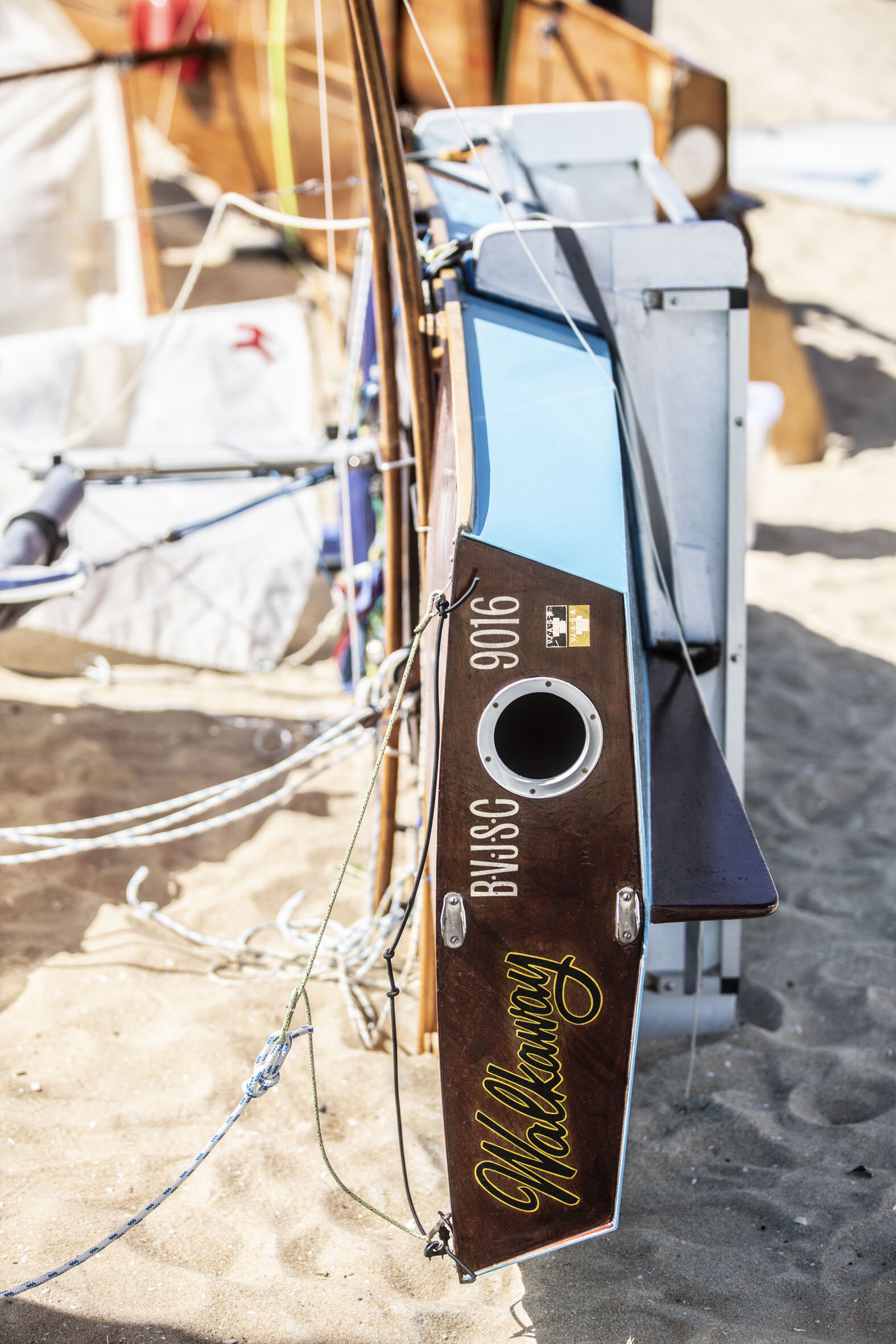
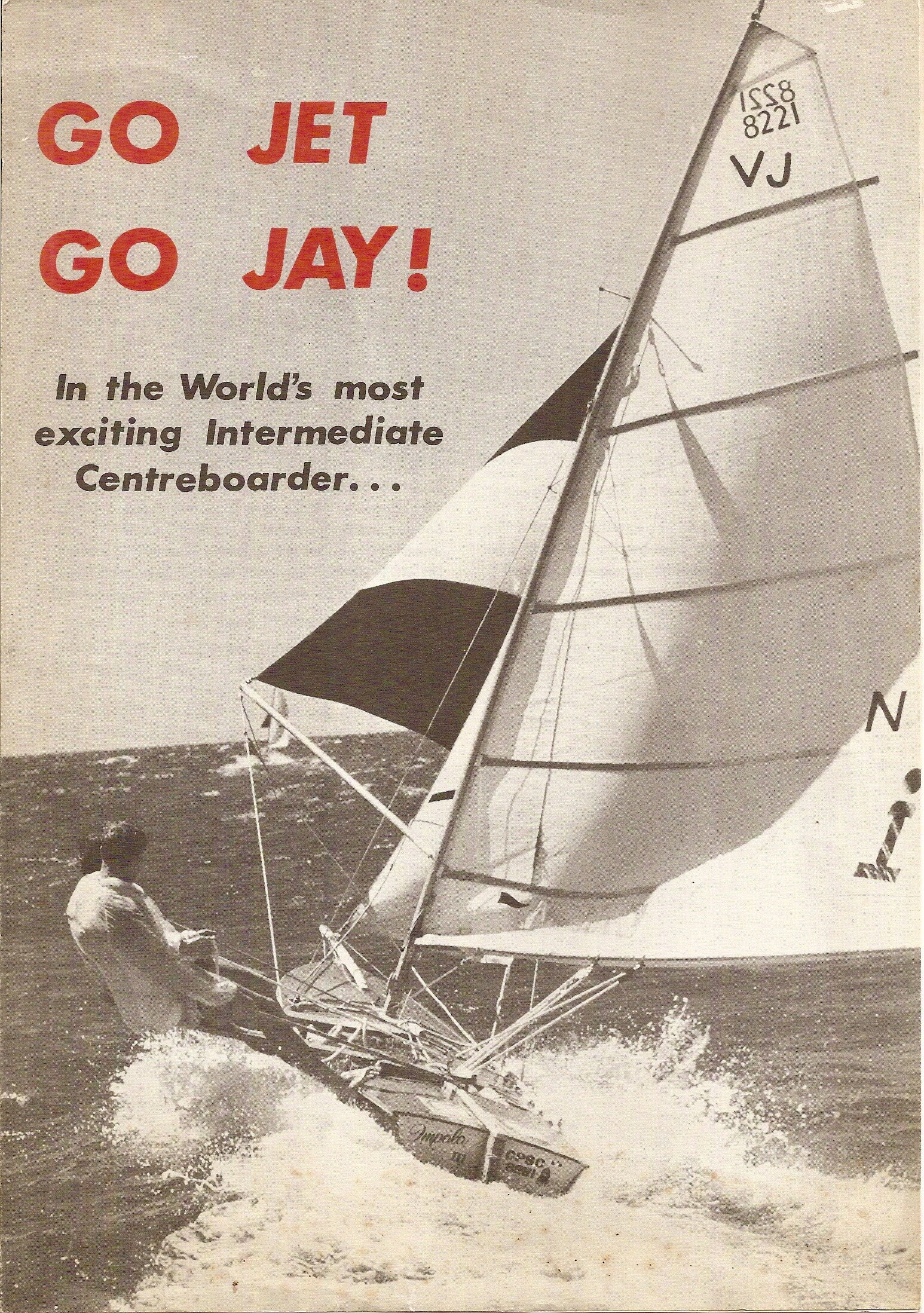

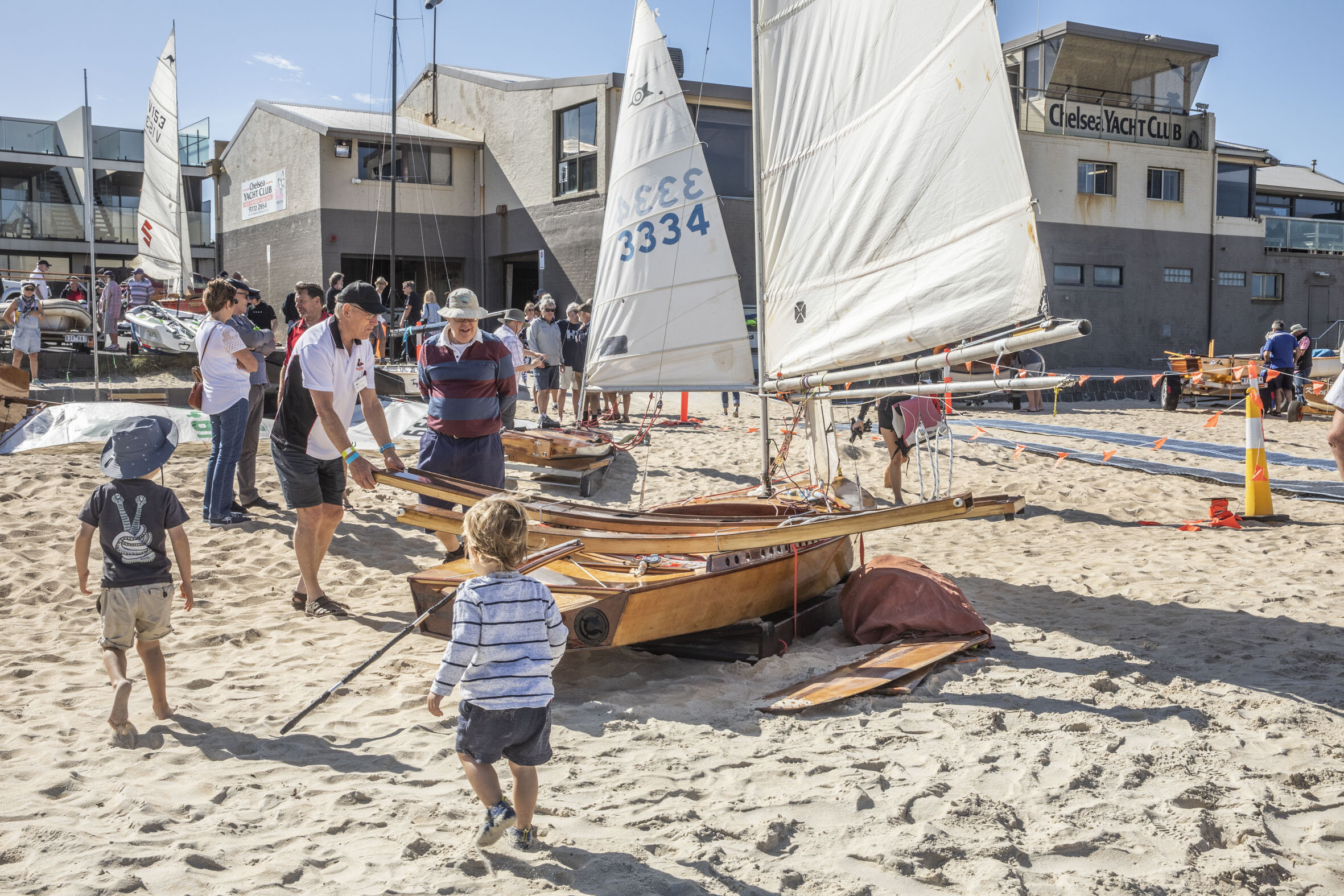
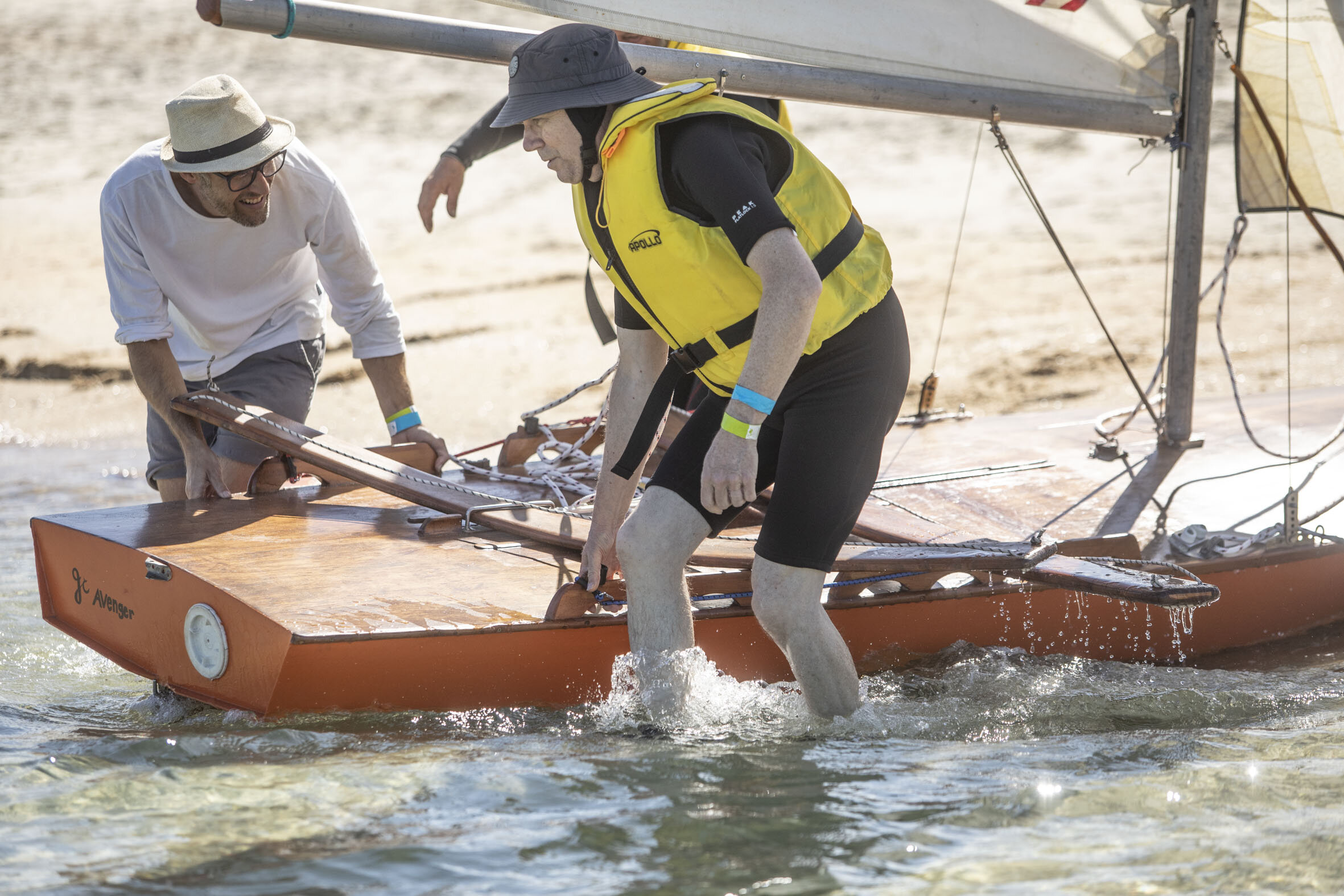


Sil Rohu’s vision for the VJ required 3 things:
1. It was purposely designed for 2 children or teenagers so they could learn to sail and learn to race
2. The boat would be unsinkable and easy to right after a capsize (most other craft at the time such as the open skiffs had to be towed ashore after a capsize)
3. The boat would be made at home by a boy and his dad and would be inexpensive to construct (in the 1930s the boat cost 5 pounds 7 shillings and sixpence, and the sails cost 3 pounds 5 shillings)
The Sailfish- “A one Design for the People”
Brian Carroll was down at Chelsea with his Sailfish
His father Jack, along with Bruce Scott designed the Sailfish in 1956. The first two boats were developed by them for their own sailing pleasure, with no intention of starting a new class. The interest in the boats when they launched at Parkdale Yacht Club on Port Phillip was such that Bruce and Jack realised that they needed to draw up some “real” plans so that others could also build themselves a boat. This led to the formation of a Class Association in 1961 and expansion through plan sales into New South Wales, Queensland and even as far as Papua New Guinea.
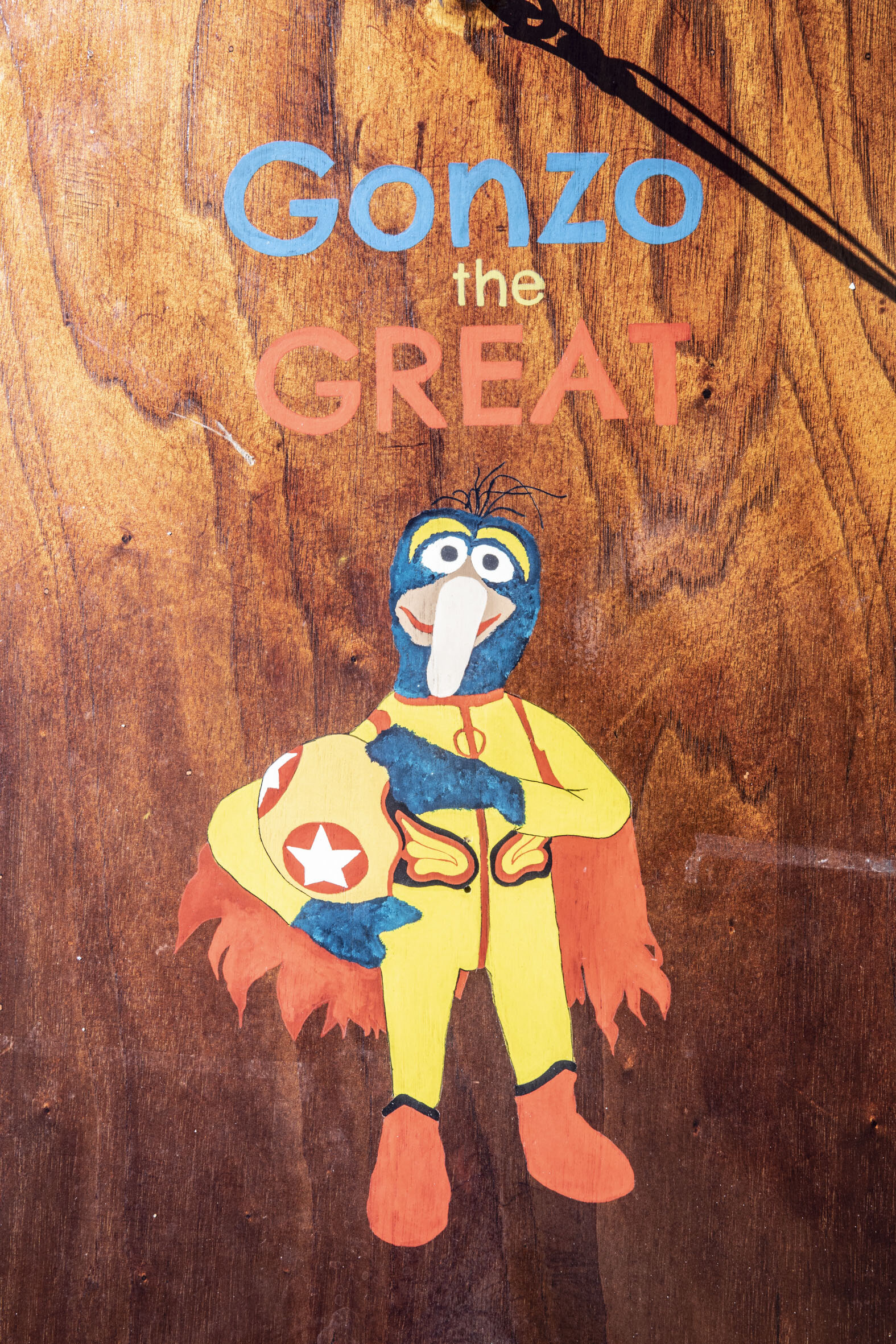
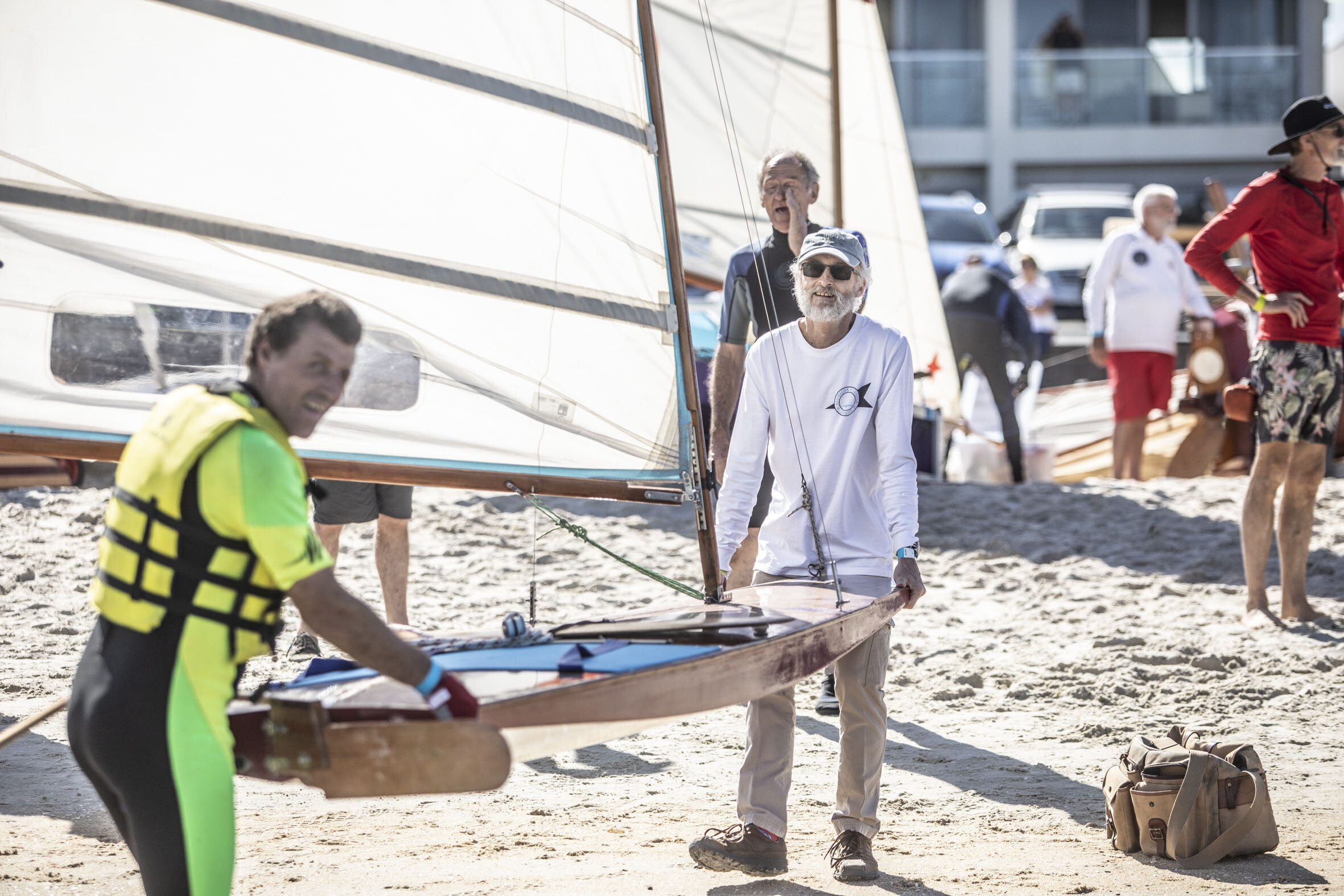

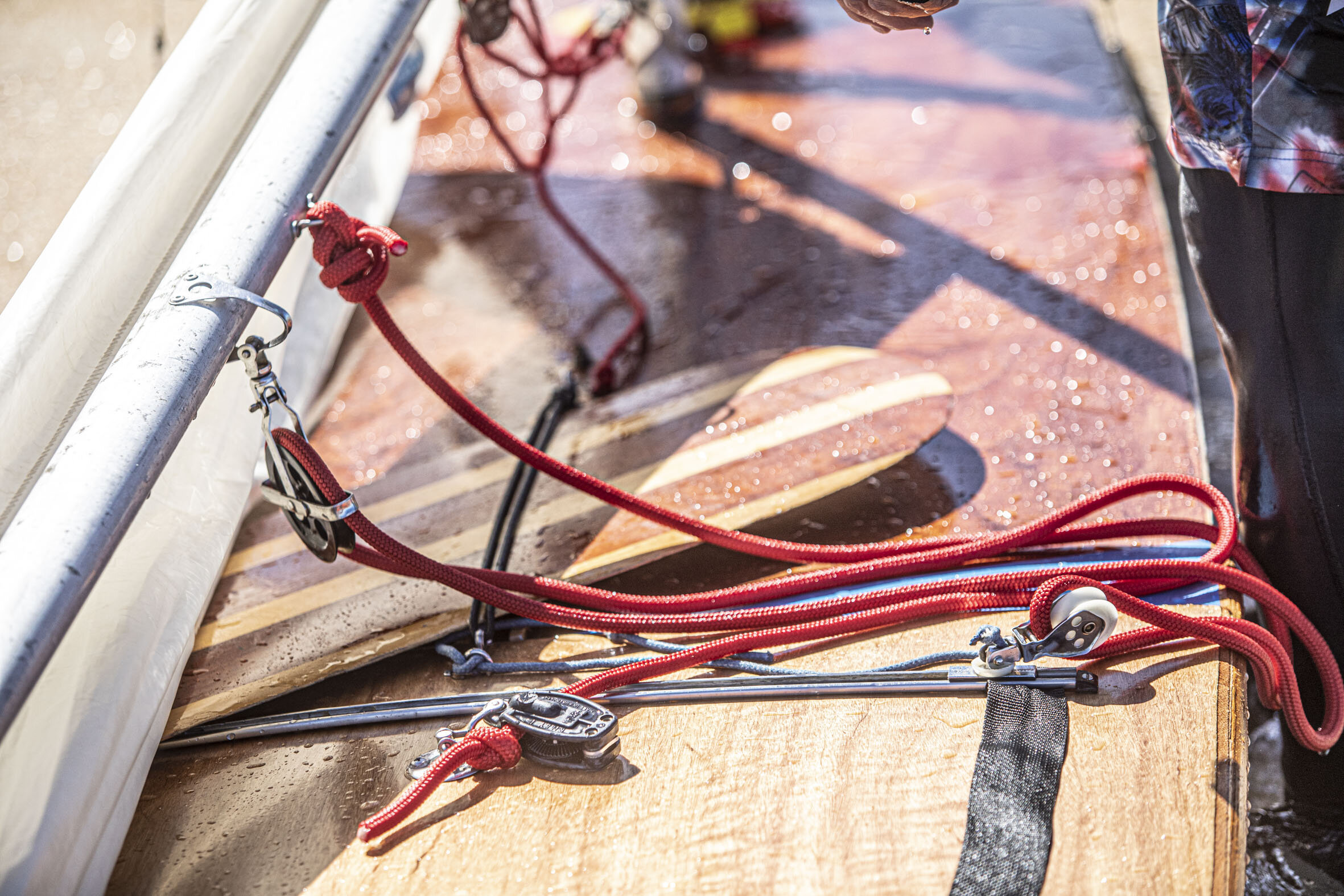
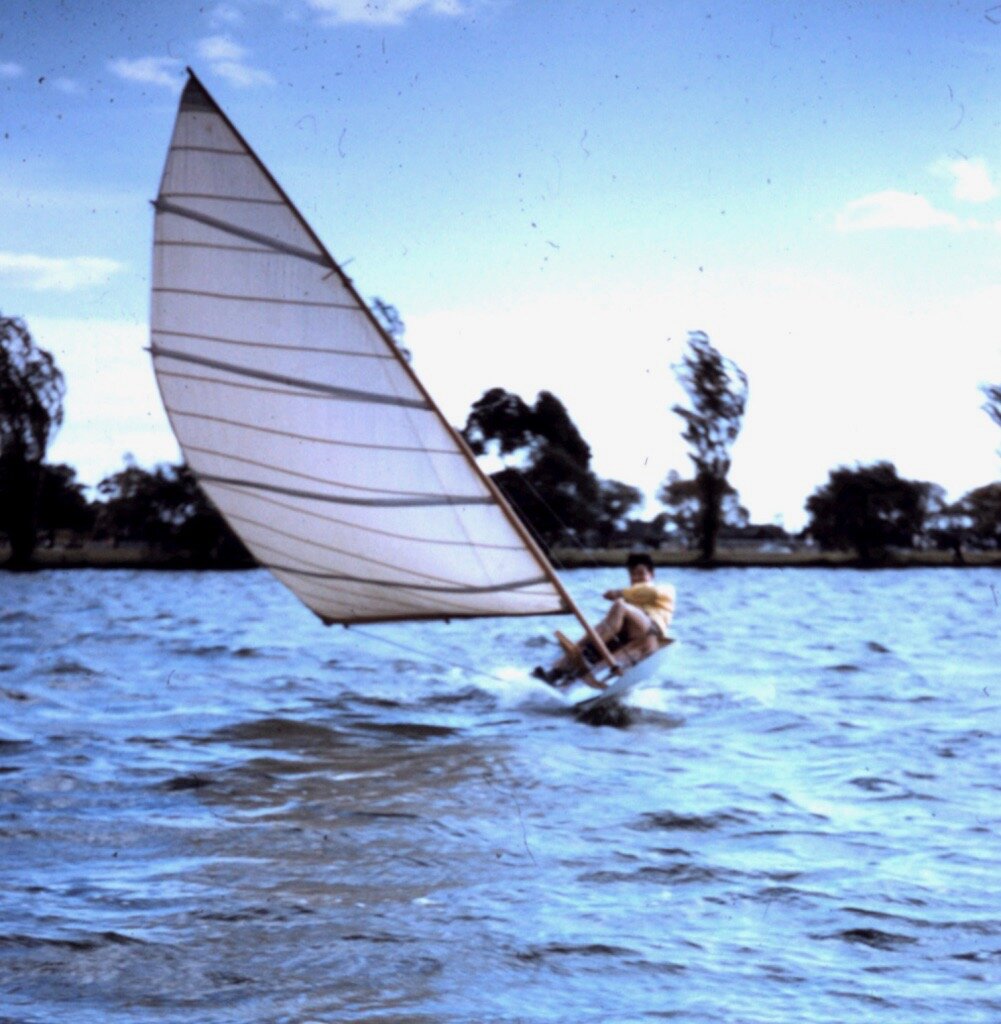
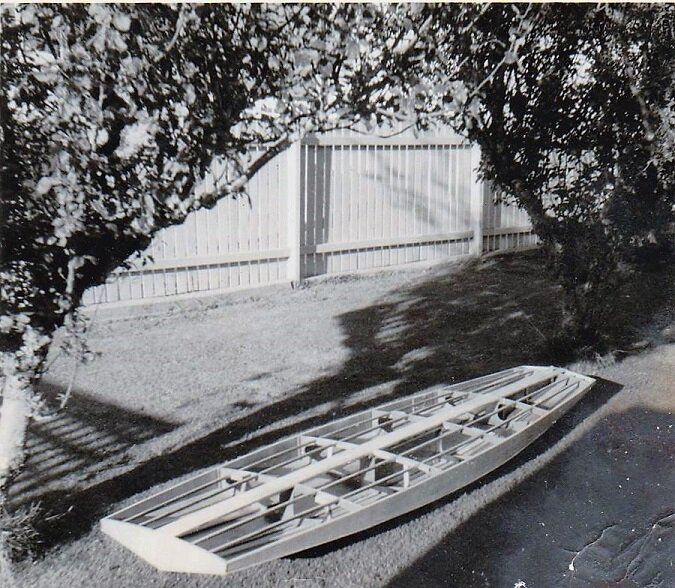
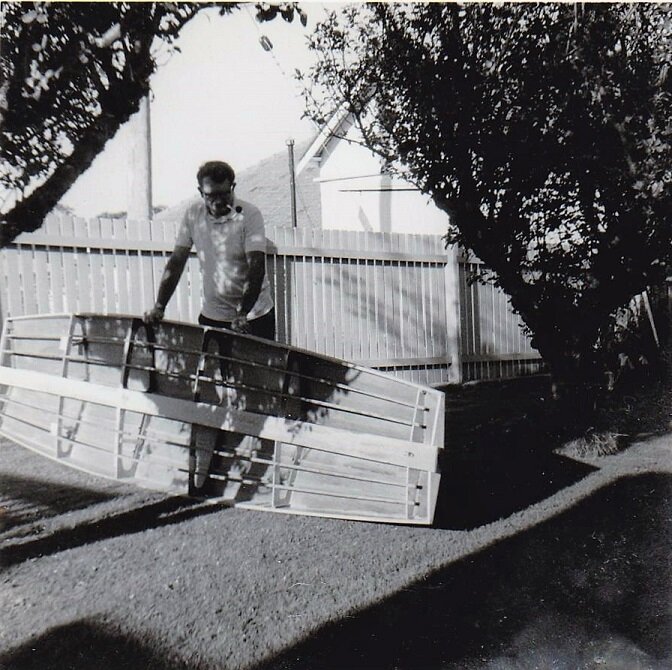
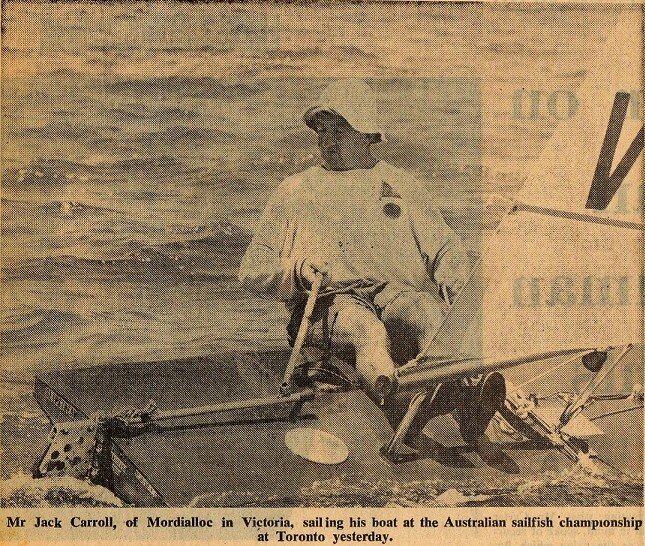
The Sailfish is a scow with a fully enclosed, fully decked hull. A shell, of marine ply for the deck and bottom and solid timber for the sides, is built over a skeleton of strongback and keel, frames and stringers, similar in construction to early ply chine surf and paddle boards. With its squared-off ends, and strongback and sheer parallel with the waterline, the Sailfish has simple lines which make it very easy to build, by even an inexperienced woodworker. It was also very easy to build well and to the minimum weight. And the boat is light at its minimum weight of 28.6 kg. It was comparatively inexpensive. The boat is unsinkable and safe. It is easily righted after a capsize and bailing is obviously not necessary. It is a single hander but was designed with sufficient buoyancy to carry 2 people in safety. The Sailfish is car-toppable. A minimum weight hull can be lifted on and off car roof-racks or a trailer by one person with some effort, and easily by two people. This is a very useful feature, regardless of whether the boat is used for non-competitive off-the-beach fun or for racing. They are very quick to set up and sail. There are still plenty of boats out there, down at the holiday home, hanging from the roof of the garage or tucked up under the house gathering dust.
The Sharpie- “The best bang-for-your-buck class that not only provides affordable participation, but competitive racing, lifelong friendship, and an infectious and renowned off-water social scene.”
Australian Lightweight Sharpies are a national one design class with a long history of evolution. The class is quite unusual in comparison to the majority of other dinghies, due to its distinctive shape, size and complement of crew, which is three including skipper, main hand and forward hand on trapeze.
The class originally evolved from the 12 square metre class used in the 1956 Olympics to form the basis of the Australian Heavyweight Sharpie; a solid wooden clinker style boat. With the increasing use of marine ply and the ‘need for speed’, the design was updated by the Addison brothers in Western Australia to take advantage of advances in sailing technology. The Australian Sharpie is one of the most iconic off-the-beach classes on offer for sailors in Australia, and its rich and vibrant history makes it a class that most sailors have some level of affinity towards. It seems that once you start sailing these iconic three-person dinghies you just become a part of a larger family.
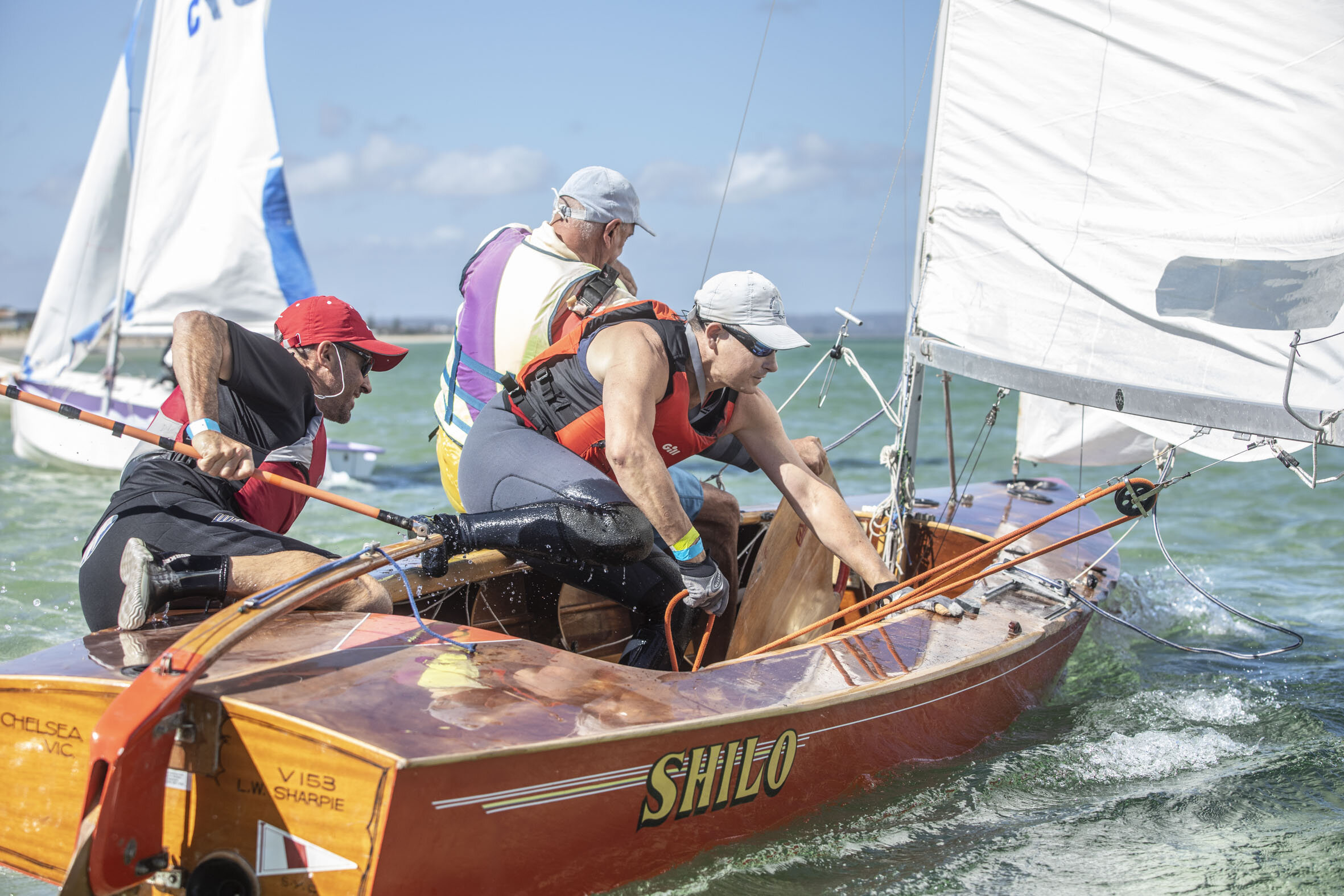
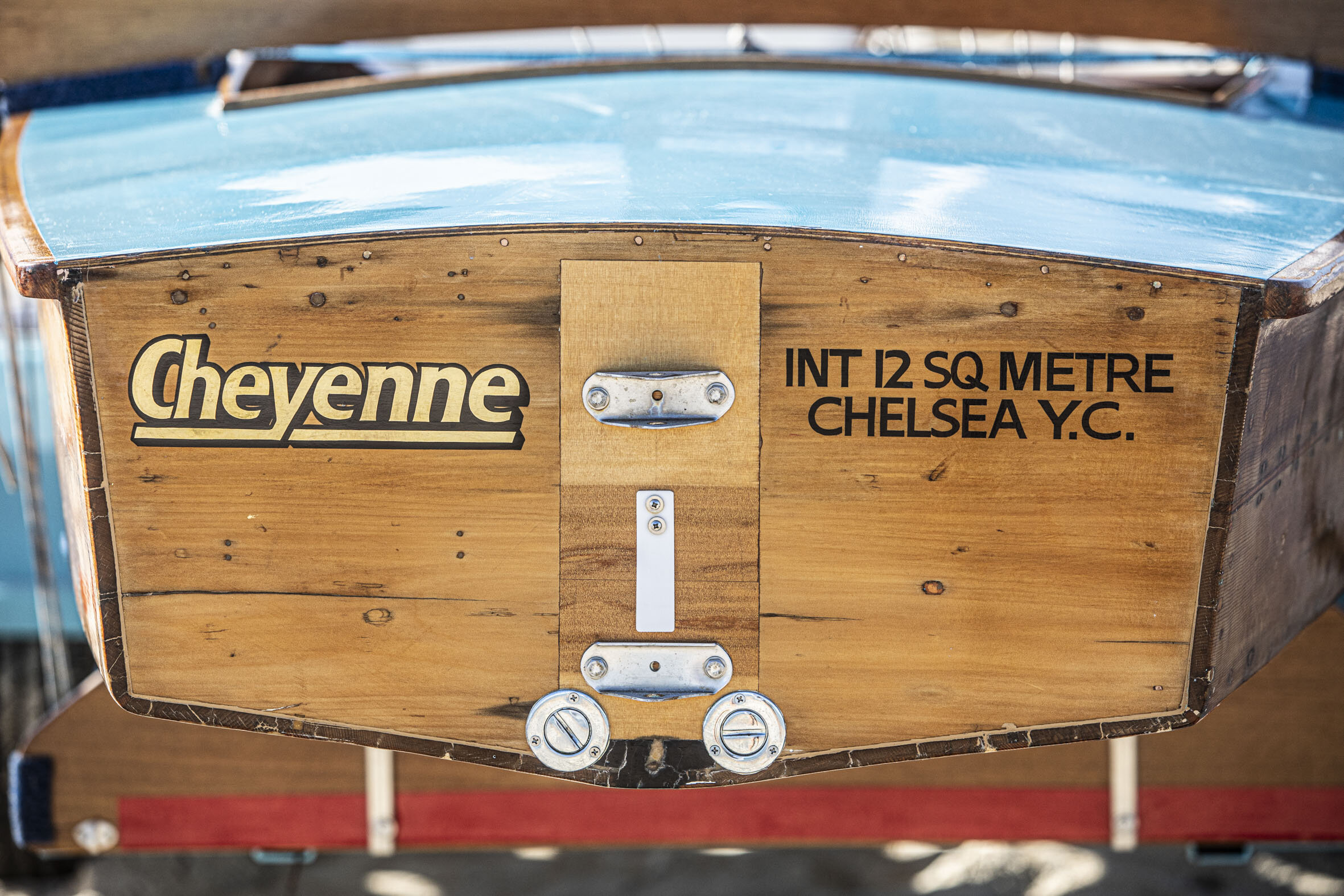
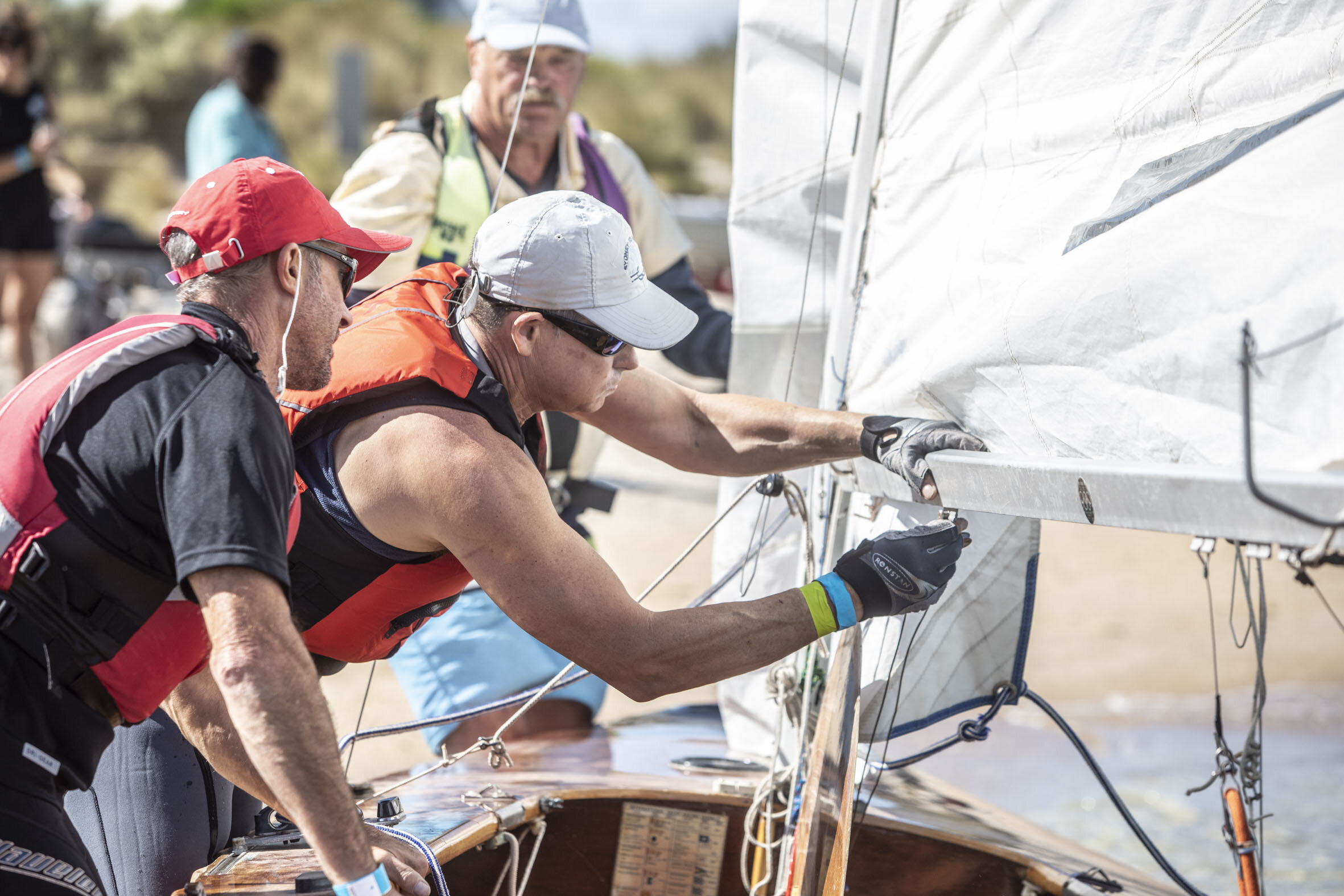

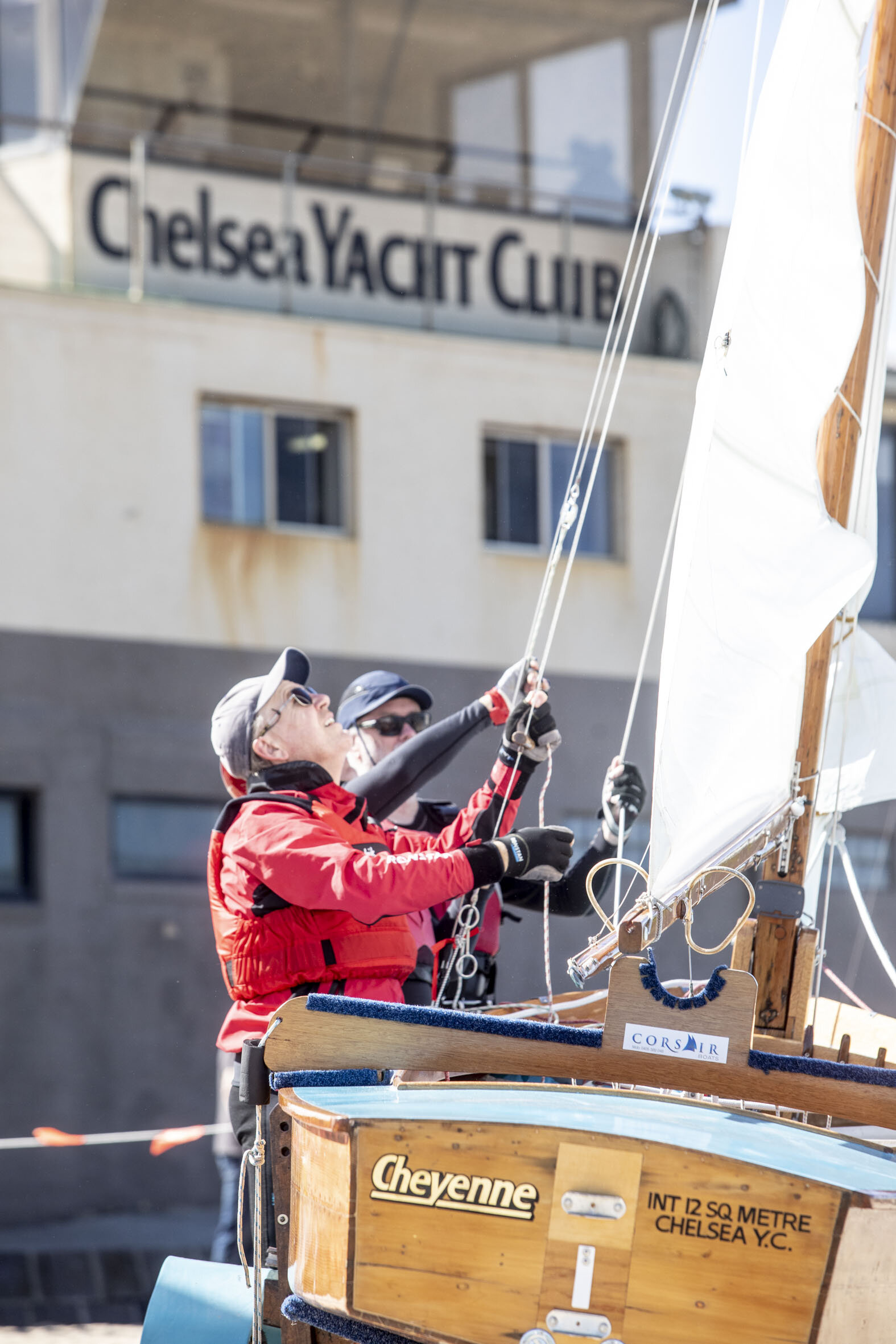
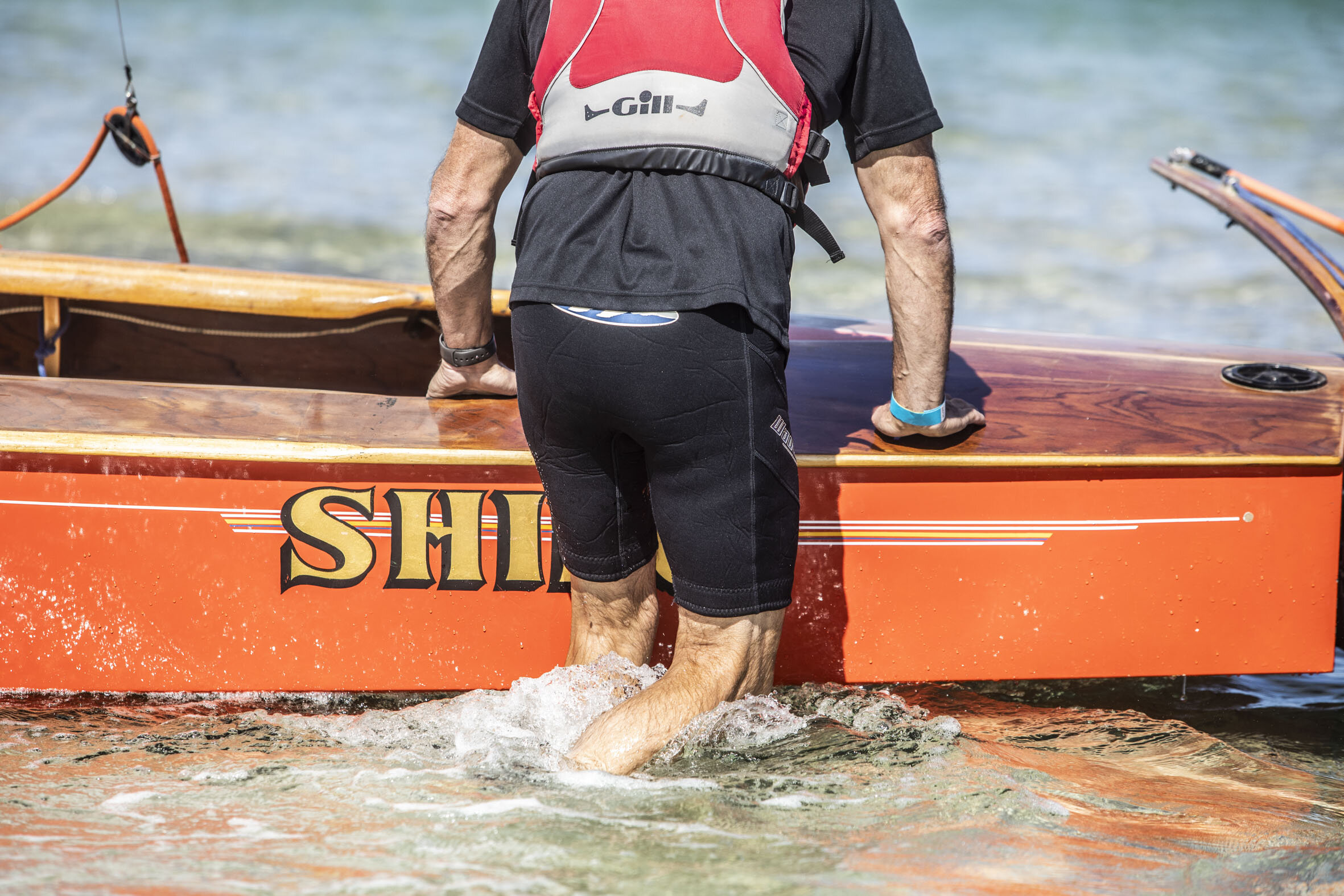
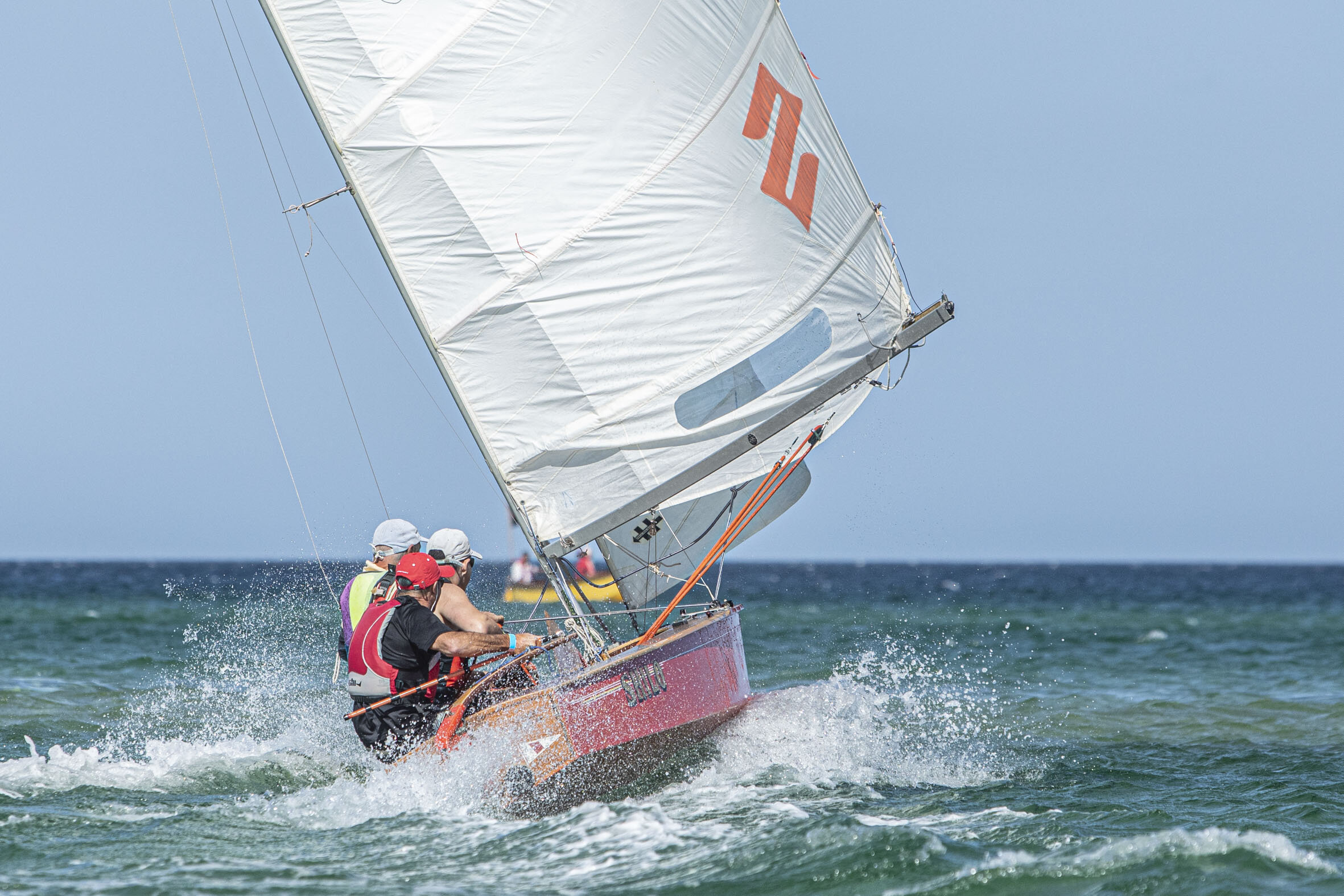
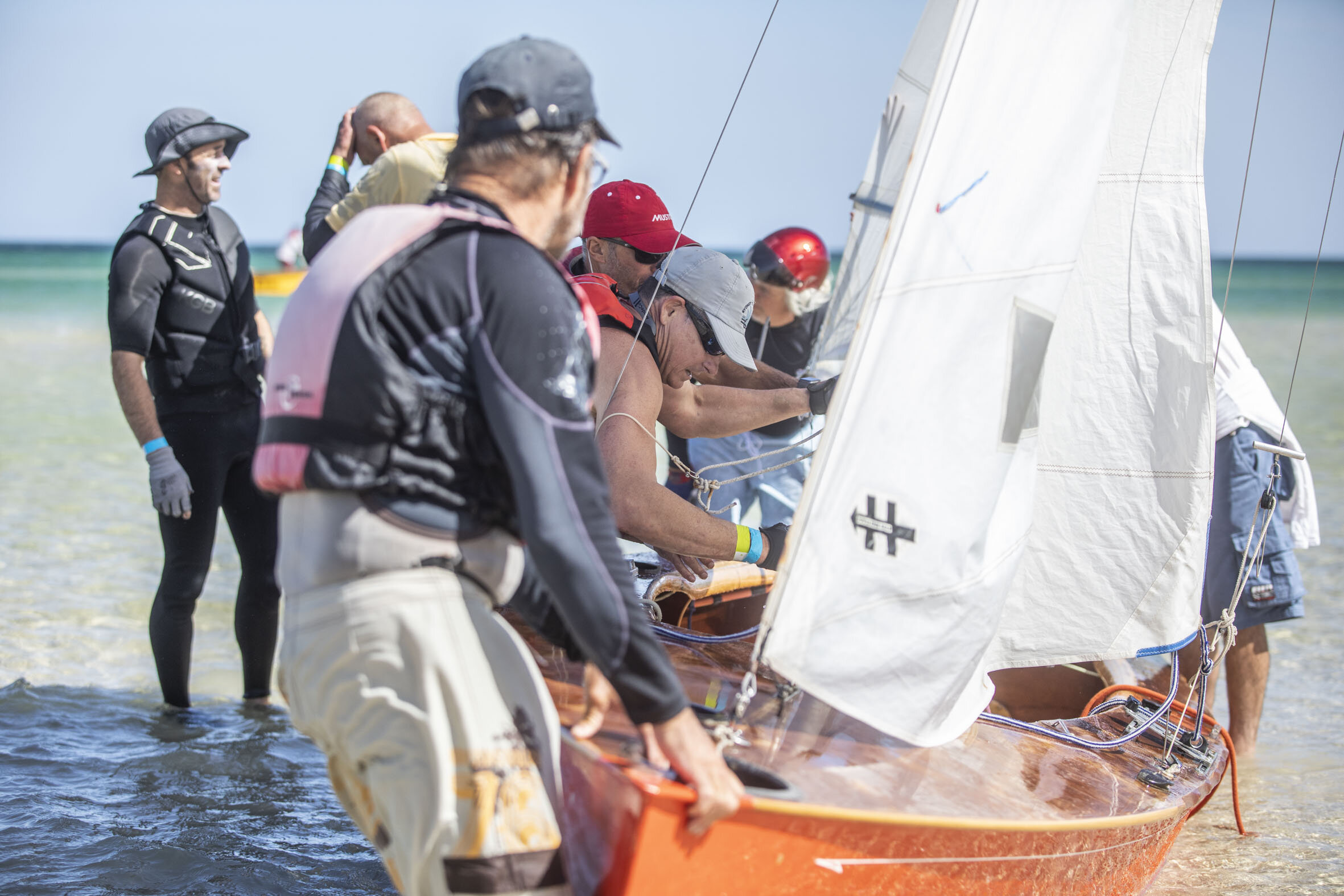
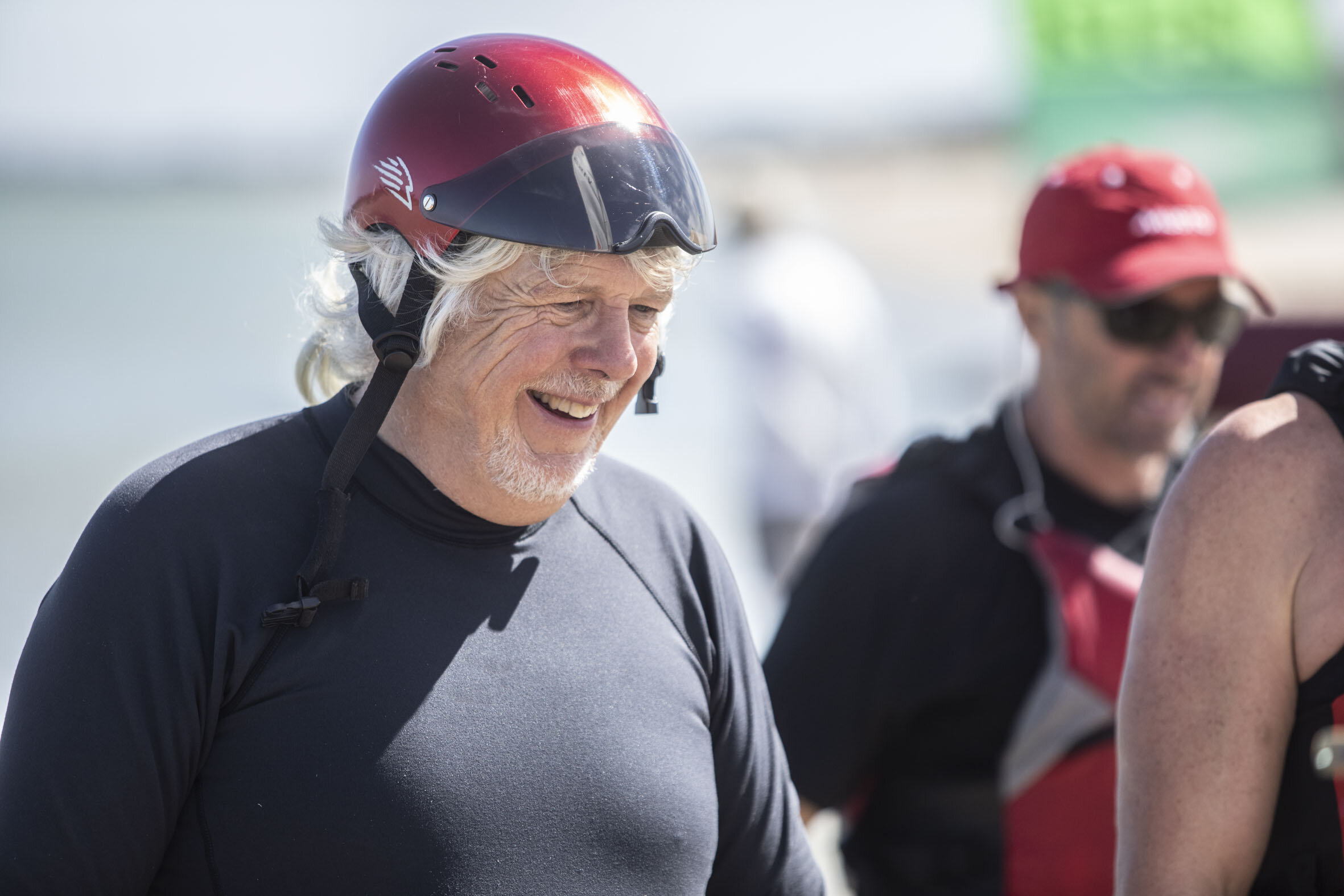
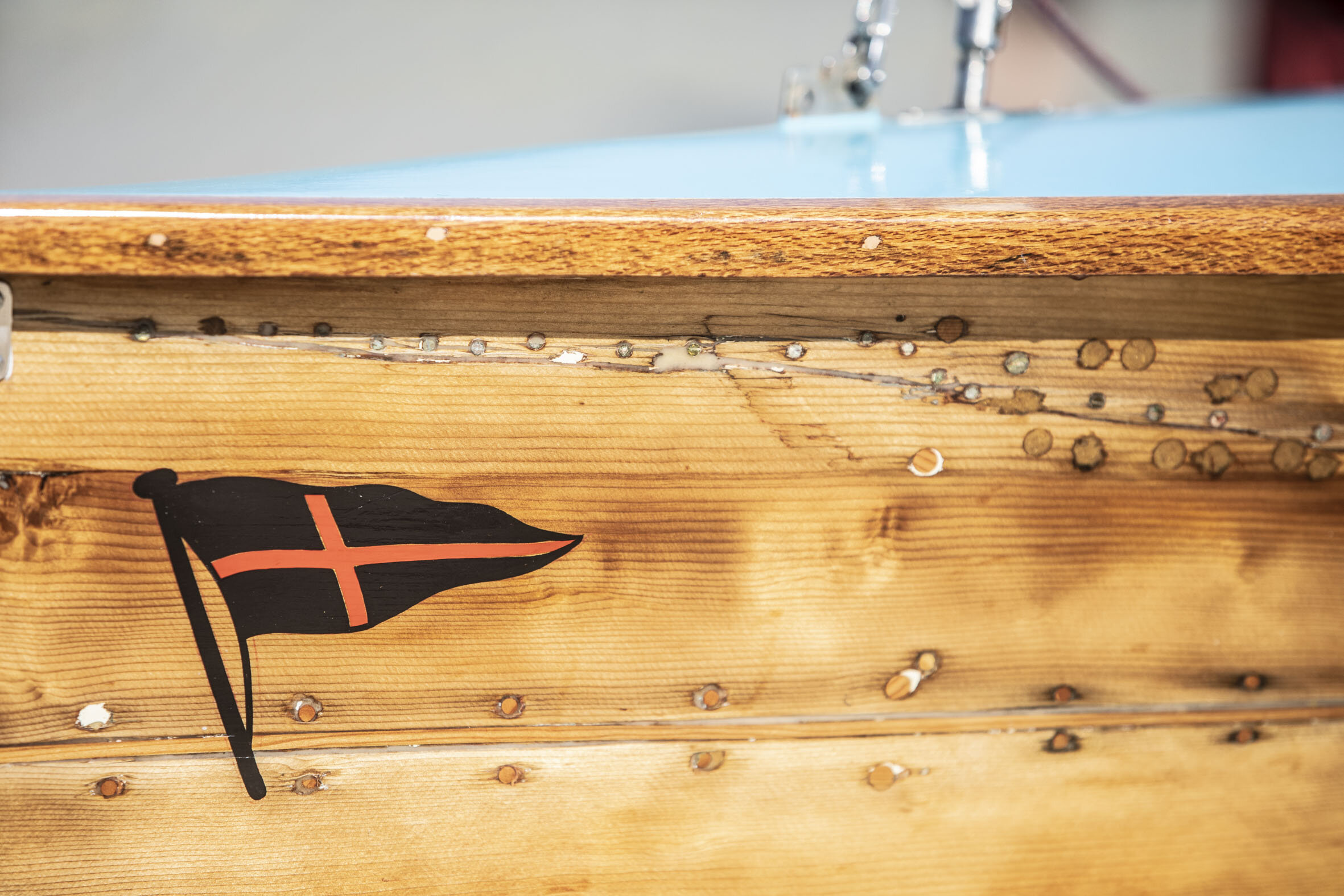
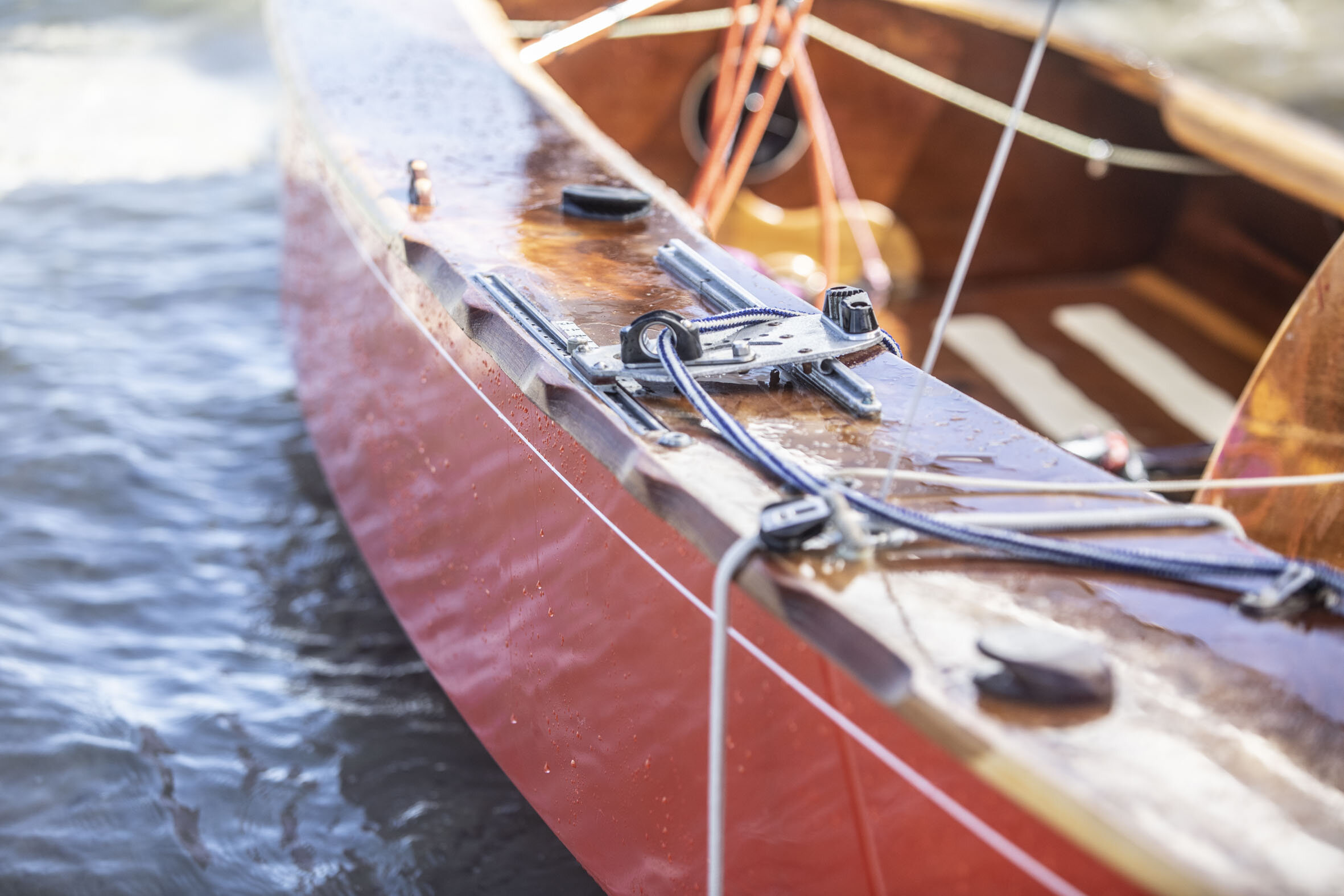
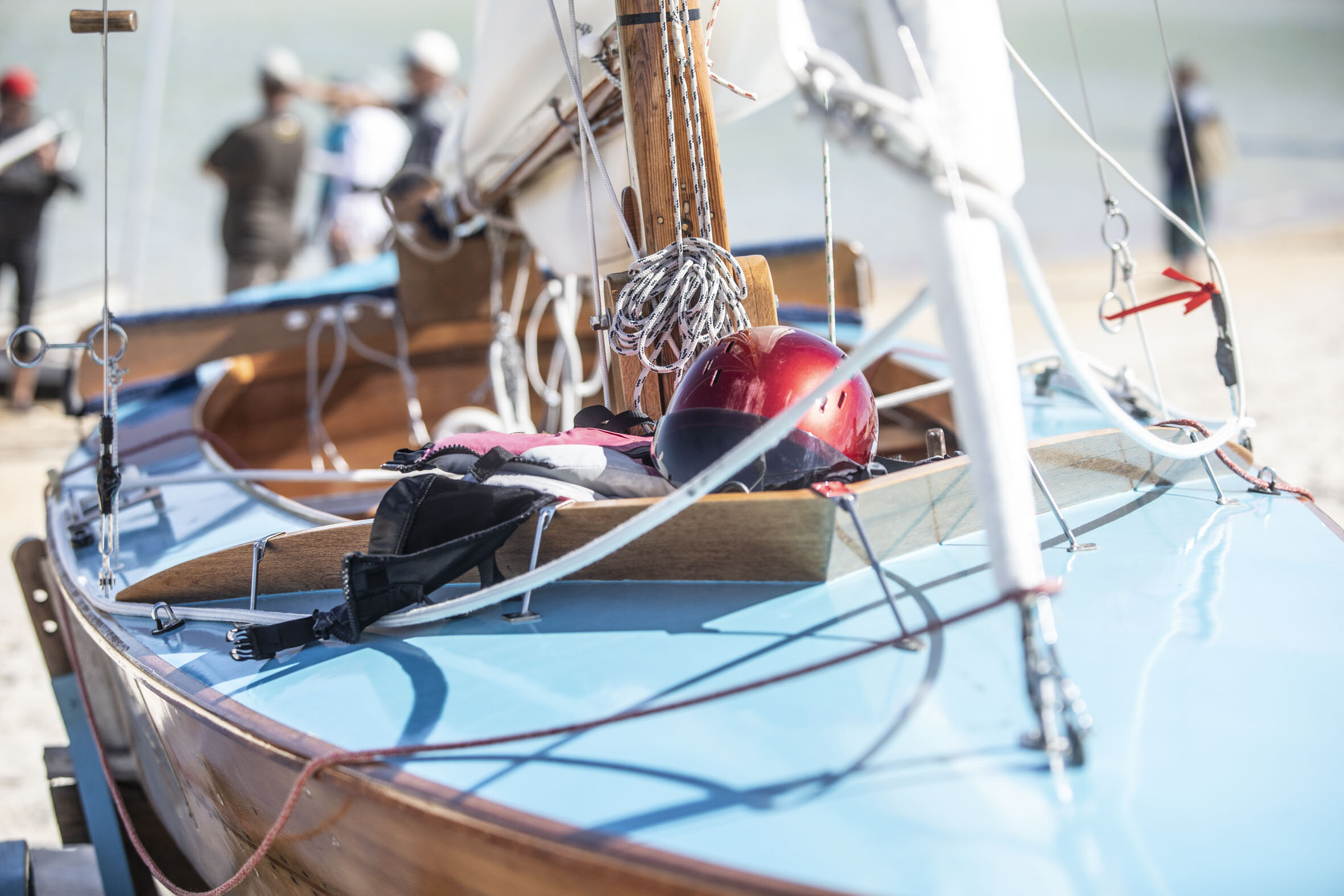
The hull shape of these boats has not altered since the 1960s and only a few minor changes to the rules have been allowed. As a restricted development class, the aim of the Sharpie association is to safeguard the one-design element, while entertaining and promoting incremental change as it becomes cost effective and beneficial. It is no good if changes are made and only those with more money can afford to implement them, particularly if there is a substantial performance improvement as a result.
The Skate- “Even after graduating to other larger boats, people hold the Skate in high esteem. They remember it for providing the best ride they ever had on a sailing boat.
The Skate sailing dinghy was designed in 1956. It is a two-man dinghy and was the original performance development class, with the sail plan created by J. Herrick and the hull by Vince Minter. Vince's idea was to design a boat that was easy to build, cost effective and would keep the older and bigger sailors of the day who were mainly sailing VJ's to stay on the water. And that was exactly the Skate did in those days. It offered high performance at an affordable price. Today Skates are regularly updated and take advantage of technological advances to maintain the "excitement" factor and original spirit. Skates are currently sailed in three states of NSW, WA and SA. Although boats still exist in Victoria, they are not sailed regularly and are some of the older boats.
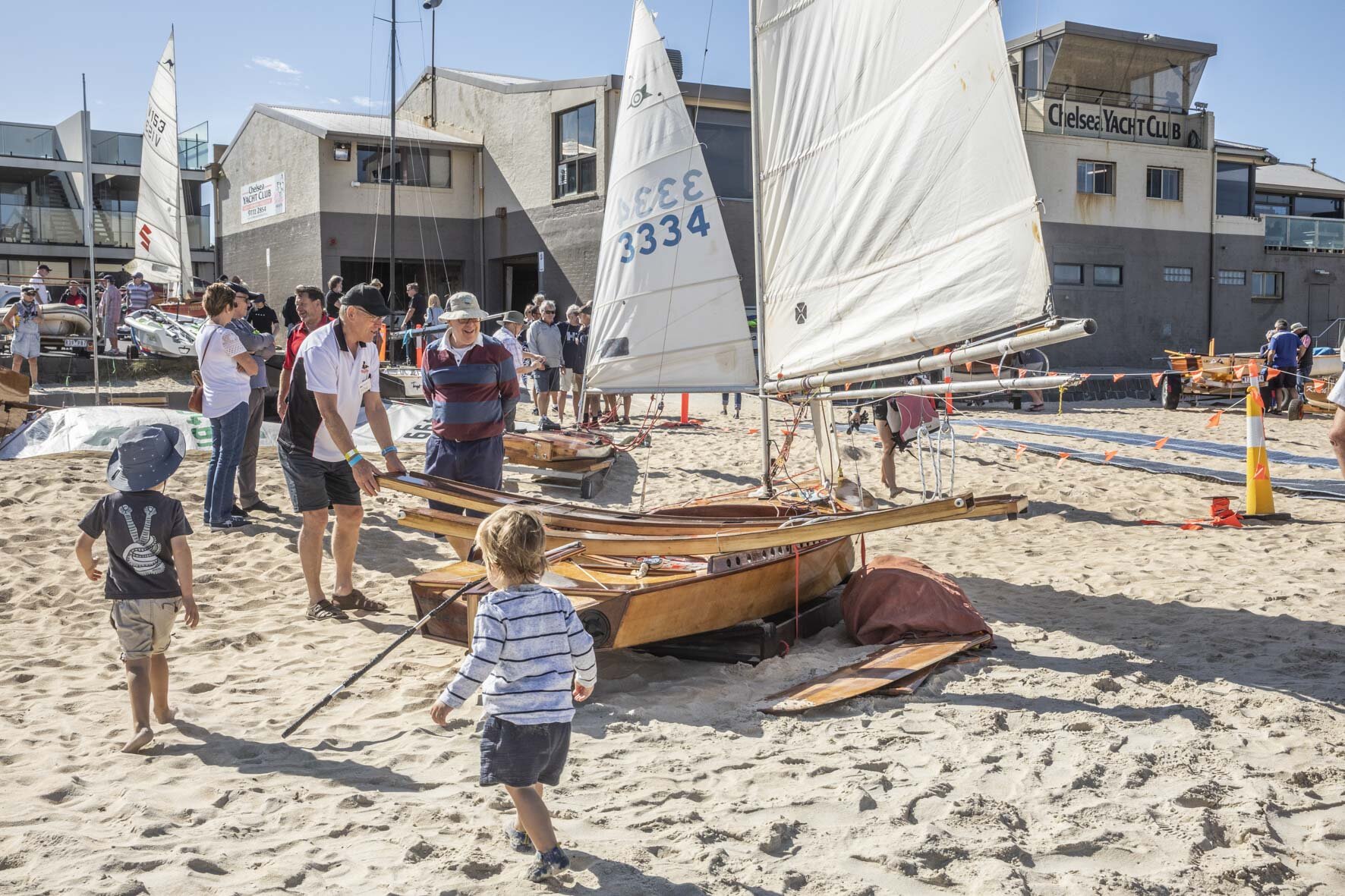
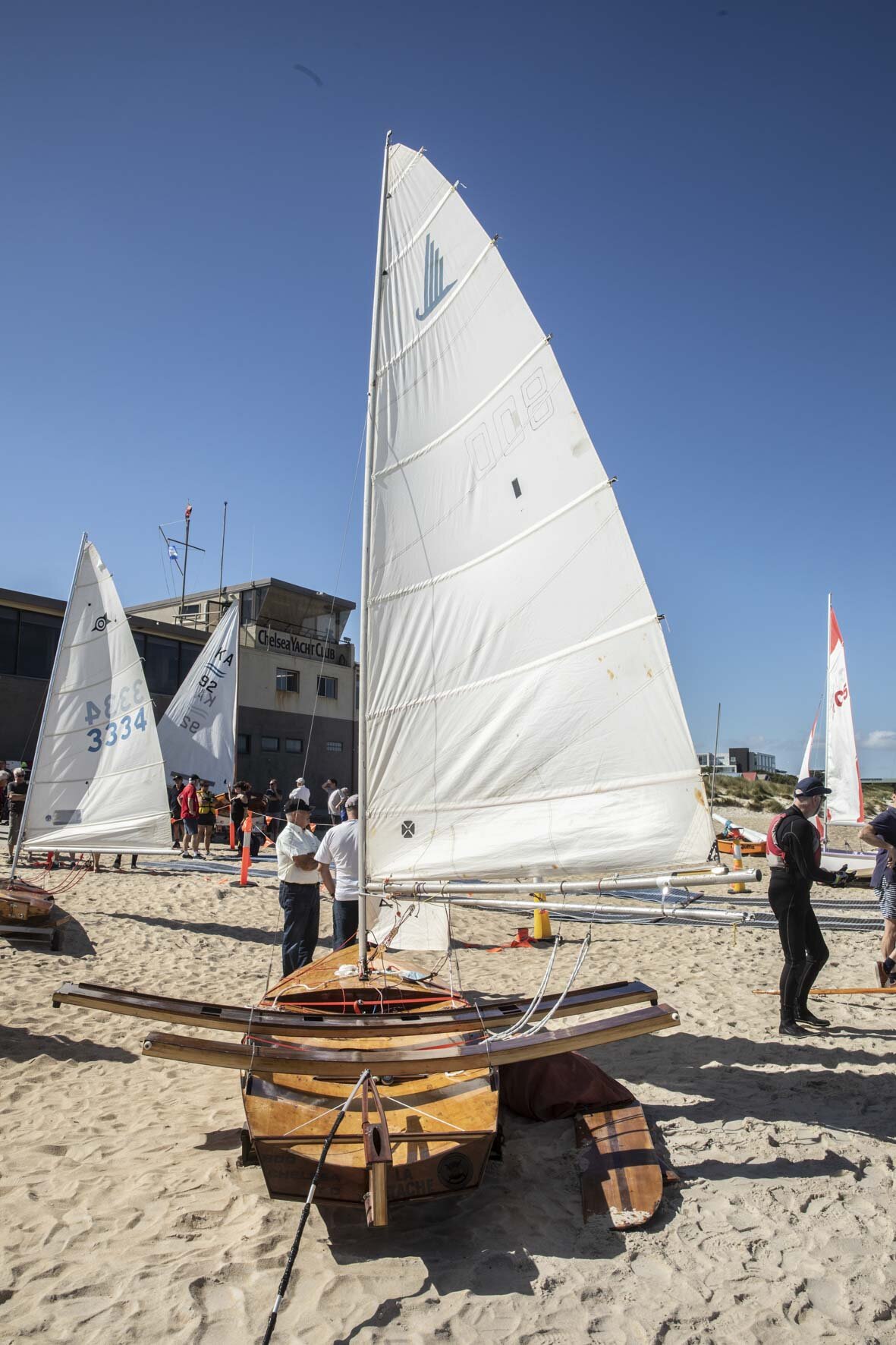
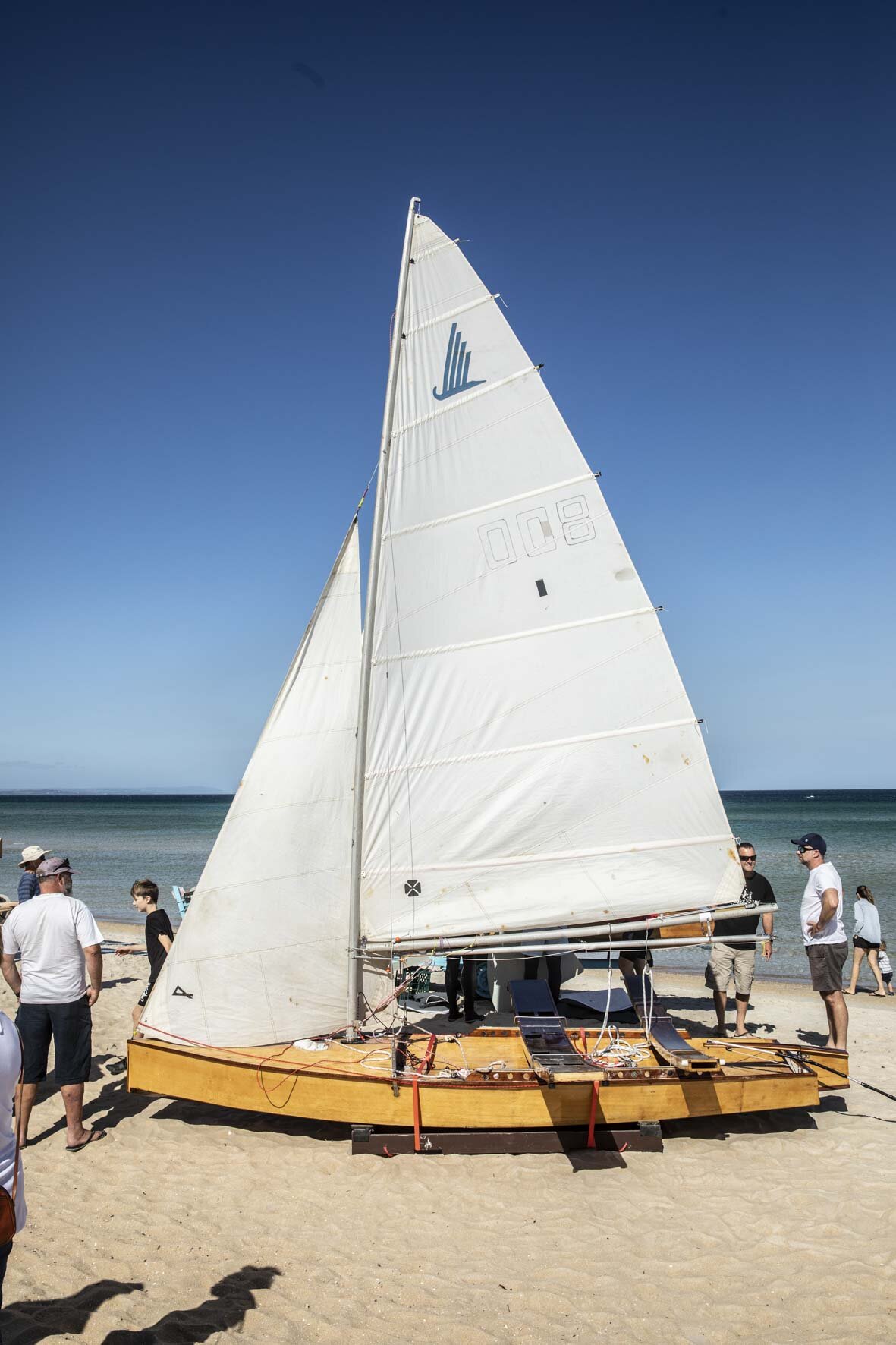
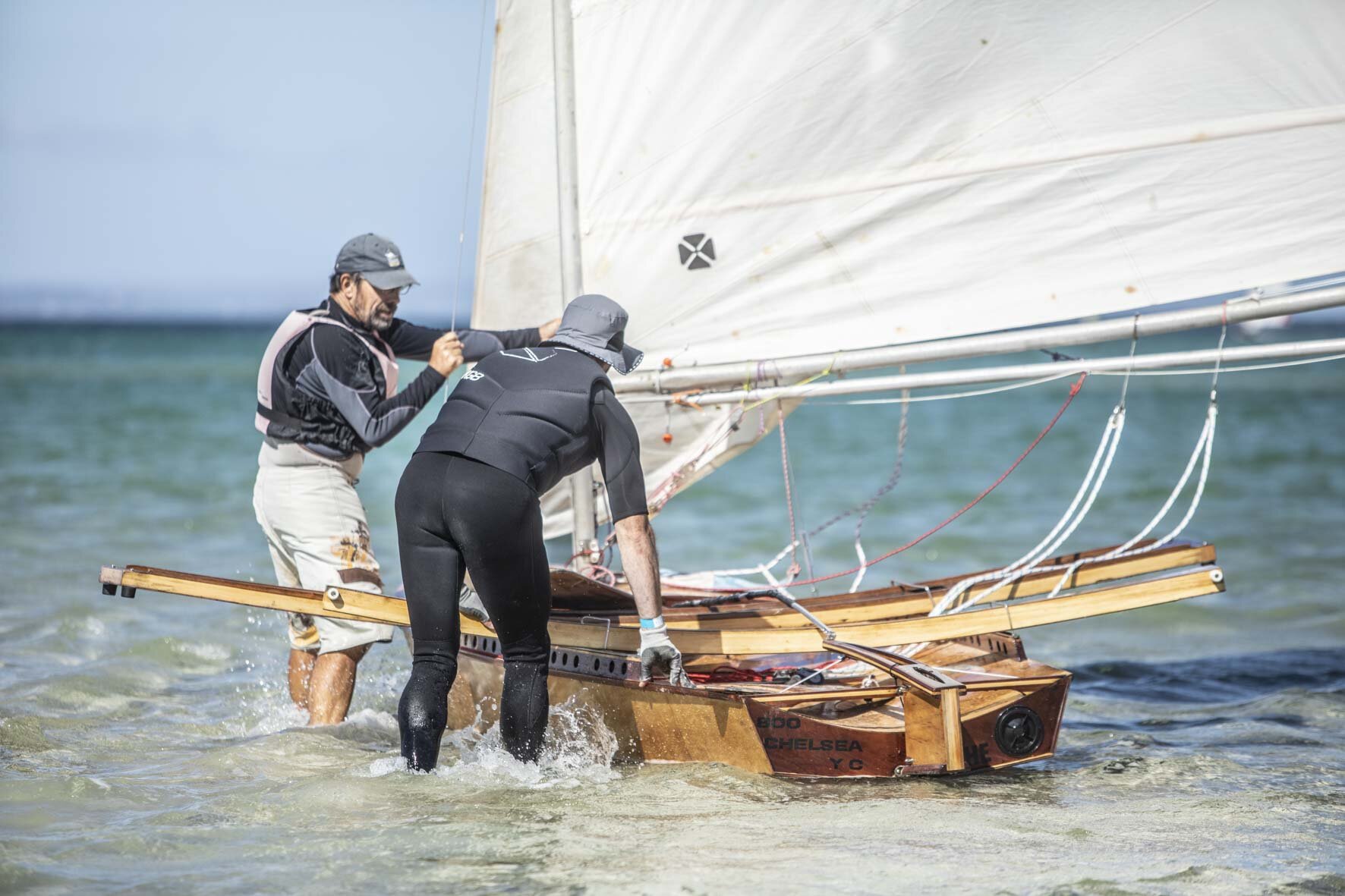
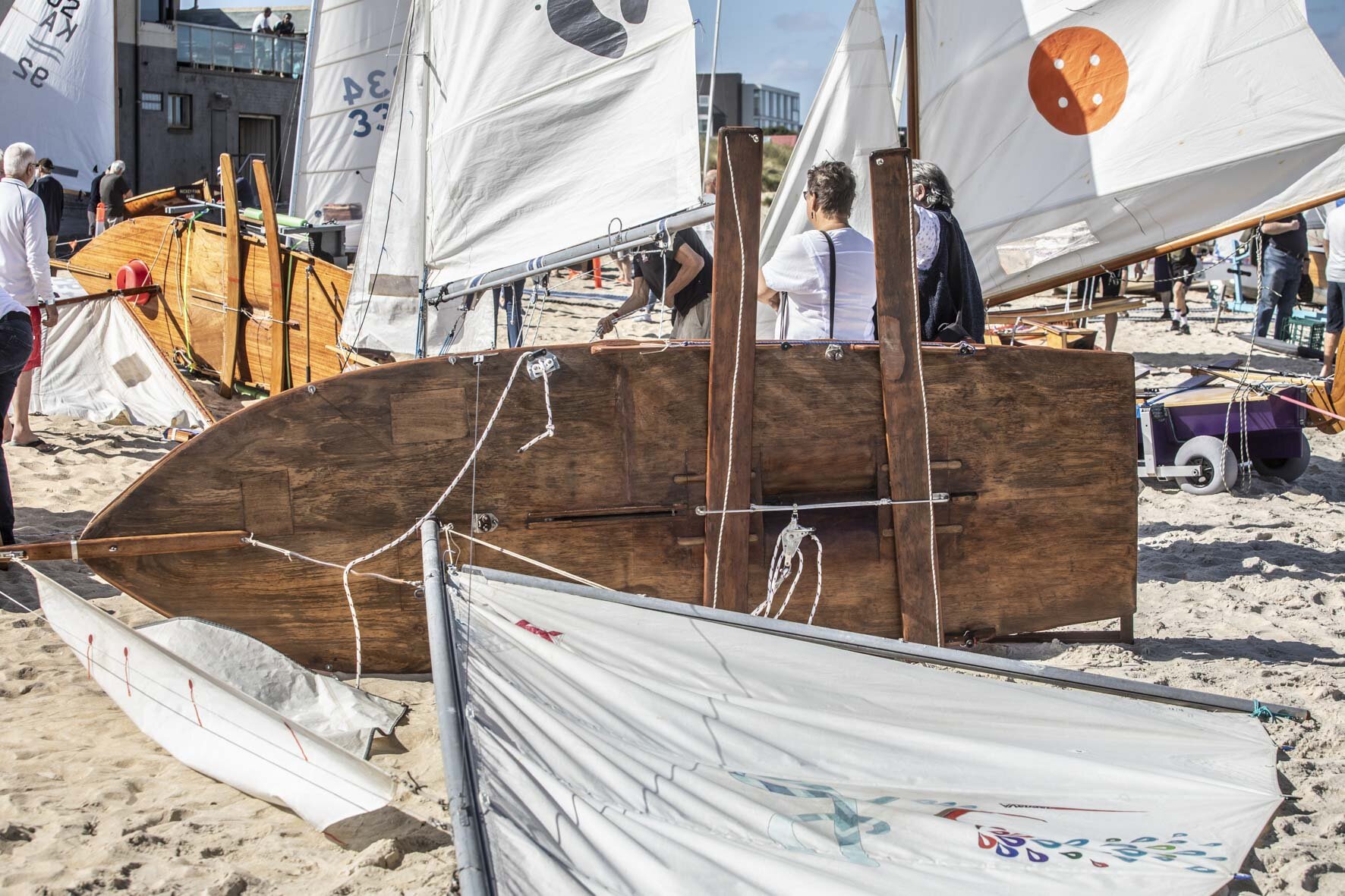
Because of its small size and lightness it keeps the sailor close to the elements and at the edge of control when navigating water and wind. It makes for wild rides and a relative exhilarating experience of speed at 15 to 25 knots. Most Skates have a 10-foot-long hiking plank for the crew and an 8-foot plank for the skipper. Planks are slid across the hull from one side to the other when tacking and gybing. Other hiking configurations include short wings with two trapezes, longer wings with one trapeze, or trampolines.
One of the top ranked websites quote: "Those who have sailed a Skate will testify that, they provide the most exciting and best sensation of speed of any monohull sailing boat. Even after graduating to other larger boats, people hold the Skate in high esteem. They remember it for providing the best ride they ever had on a sailing boat."
The Rainbow-“When it is considered that no concerted effort had been made to popularize the class, we can only attribute its popularity to the low cost of construction combined with unexcelled sailing capabilities (speed & safety) of this grand little craft”
Rainbow class yachts appealed to youngsters because they could build one themselves, they were fast and thrilling to sail, cheap to build, and safe with good buoyancy compartments. In Southern states they outnumbered the popular Sydney VJ’s. Rainbows were controlled in Australia by the National Rainbow Council with affiliated clubs in Victoria, South Australia, Western Australia, New South Wales, Queensland and Tasmania. The Rainbows built in the early fifties had wooden masts, booms and cotton sails costing all up £75 including a set of plans & two lifebelts. By 1960 over 100 were registered in Tasmania. “When it is considered that no concerted effort had been made to popularize the class, we can only attribute its popularity to the low cost of construction combined with unexcelled sailing capabilities (speed & safety) of this grand little craft.” In the early sixties most Rainbow hulls were built for around $60 with Dacron sails costing $120, many young amateurs built their own boat and were sailing an extremely fast, competitive boat, for under $300.
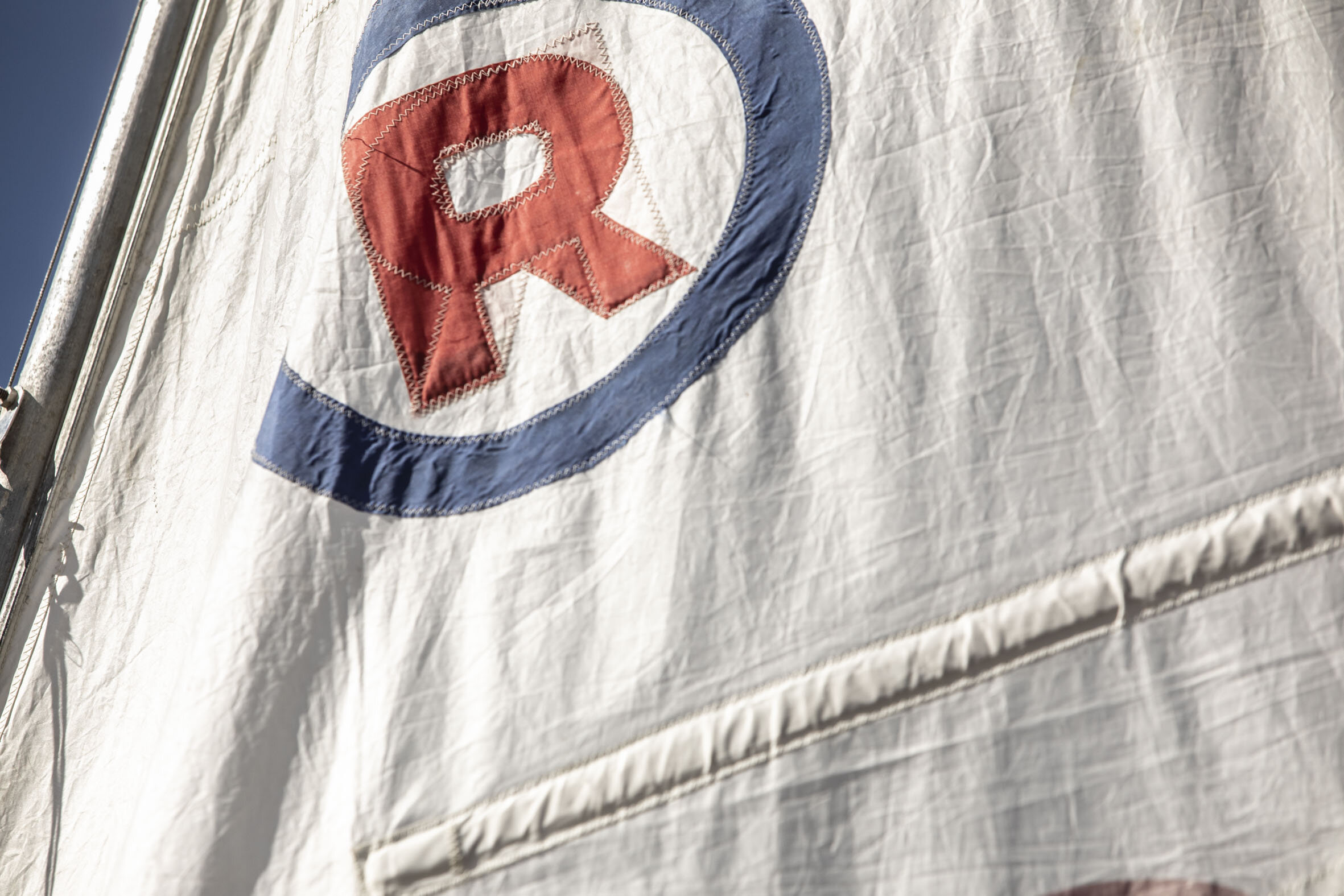
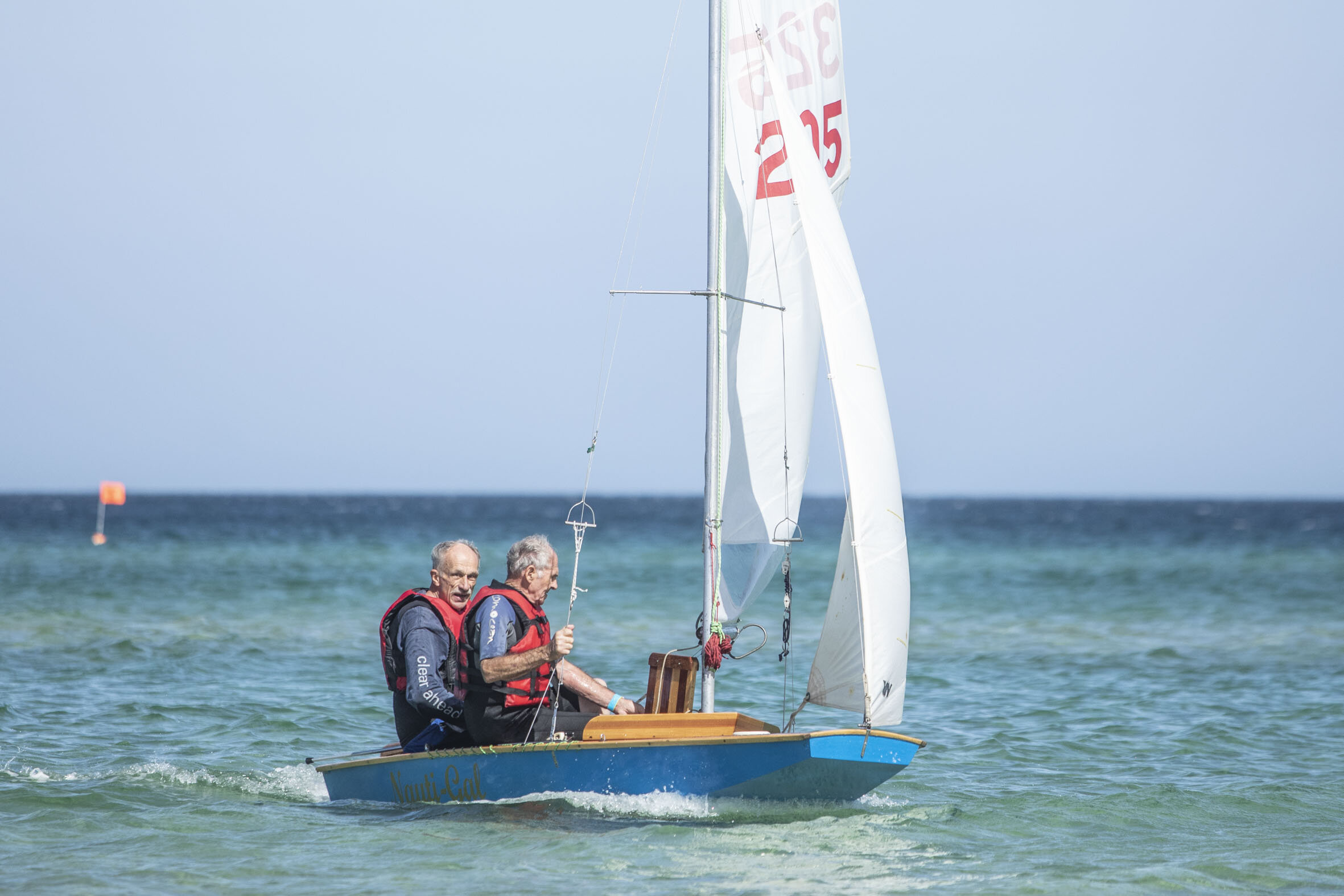
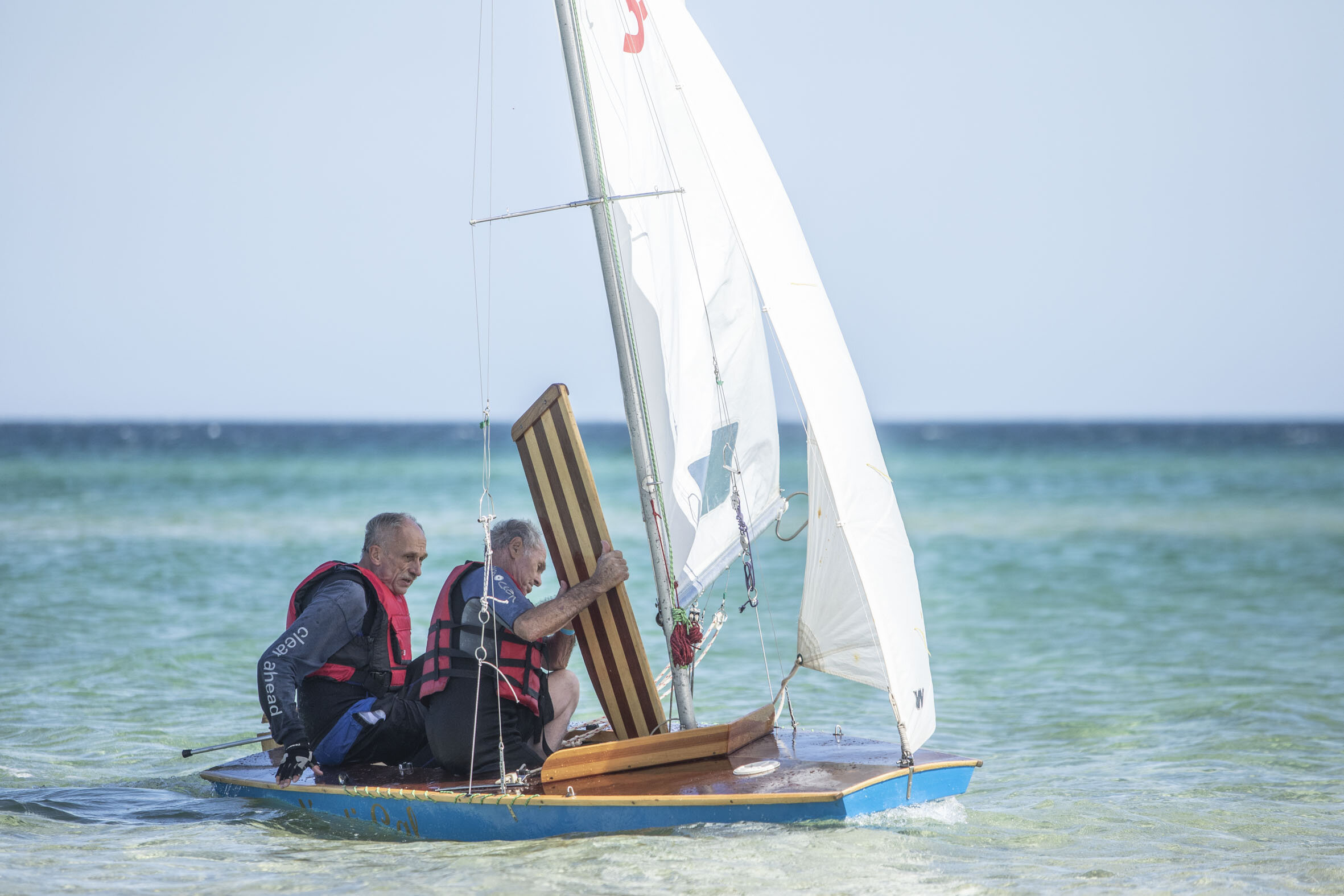
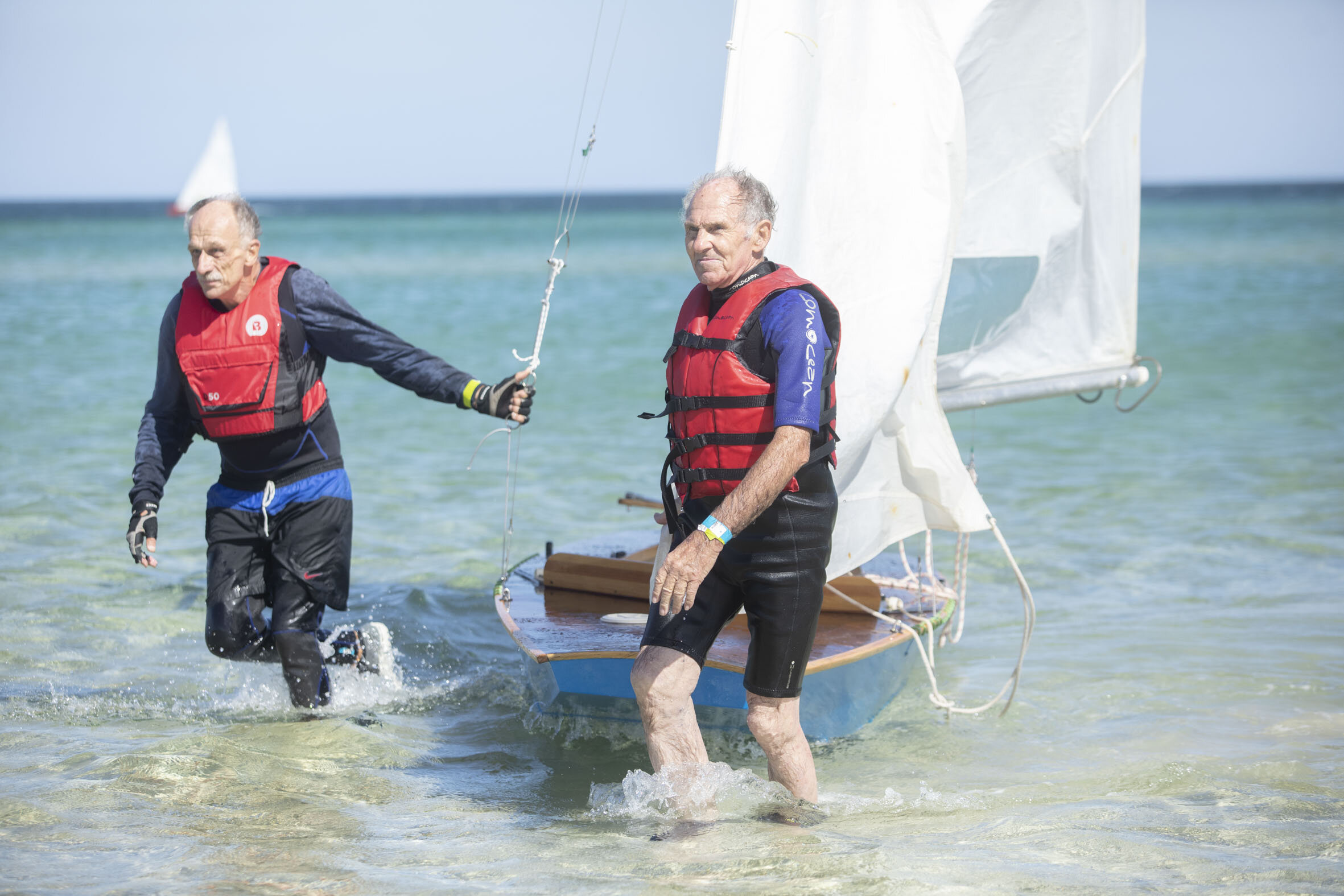
Andrew Chapman and family, had two restored Rainbows
"The Rainbow is lovely small boat to sail. It is very forgiving and a lot faster than a Mirror and Heron without using the trapeze and/or large spinnaker. I think it is an ideal boat for an adult and young kid or young teenagers. Trilby and I sailed with each of her two daughters and we plan to introduce them to using a trapeze on a beat and then the trapeze with spinnaker on reaches. We are also putting them on the helm and they enjoy sailing the quicker boat and they are not overwhelmed by the boats size. When they are comfortable using the trapeze and spinnaker trapeze combination the next stage will be the Gwen 12 then Cherub. I think the Rainbow is a very good small boat and it is one that is very easy for home builders to make.”
There were plenty of other craft that could well get their own little story on this site in coming weeks…
A brand new Mirror dingy built by Philip who used to make and sell Mirror kits from 448 Chapel Street South Yarra in the 1970’s. He says they could sell up to 50 a month! There was a lovely old club Sabot that went out in the testing conditions called JAFFA and Mark Rimington also brought along his beautifully restored Mouldcraft St Kilda Eight built after the war in the 1950’s. And for immaculate presentation you couldn’t go past TARGET the superb 14ft Skiff which was 3rd in the world Championships in Longbeach, California in 1978.
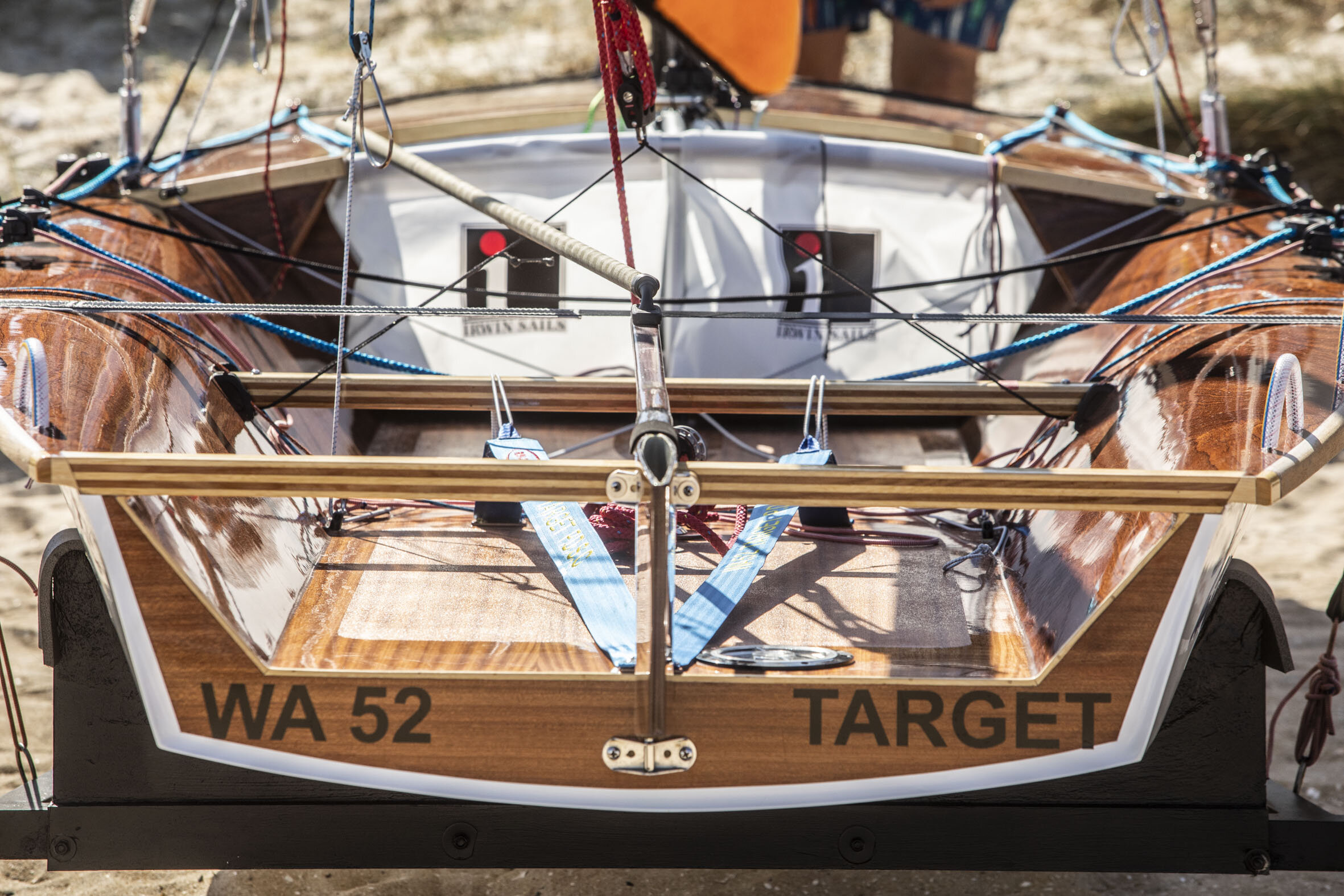
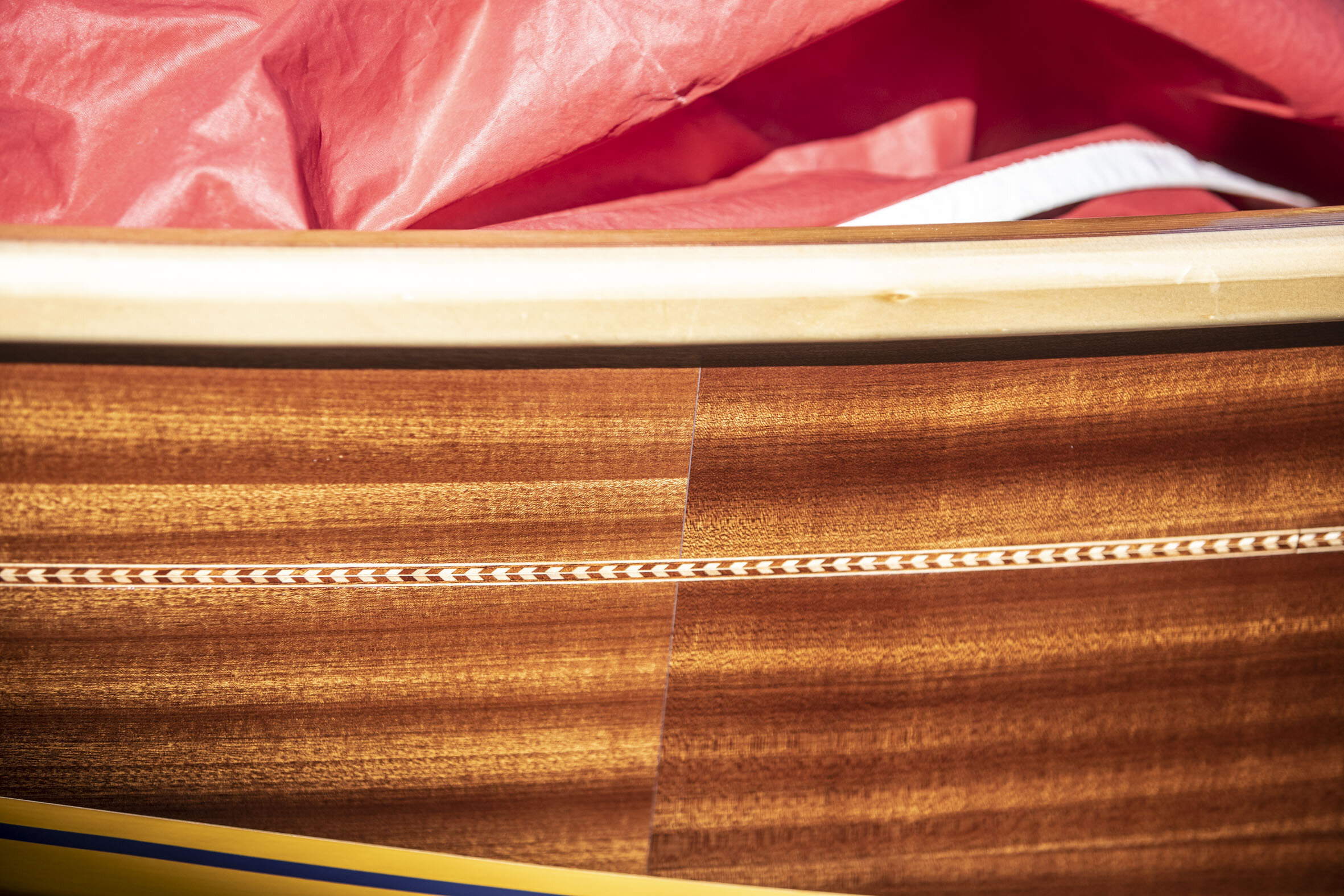
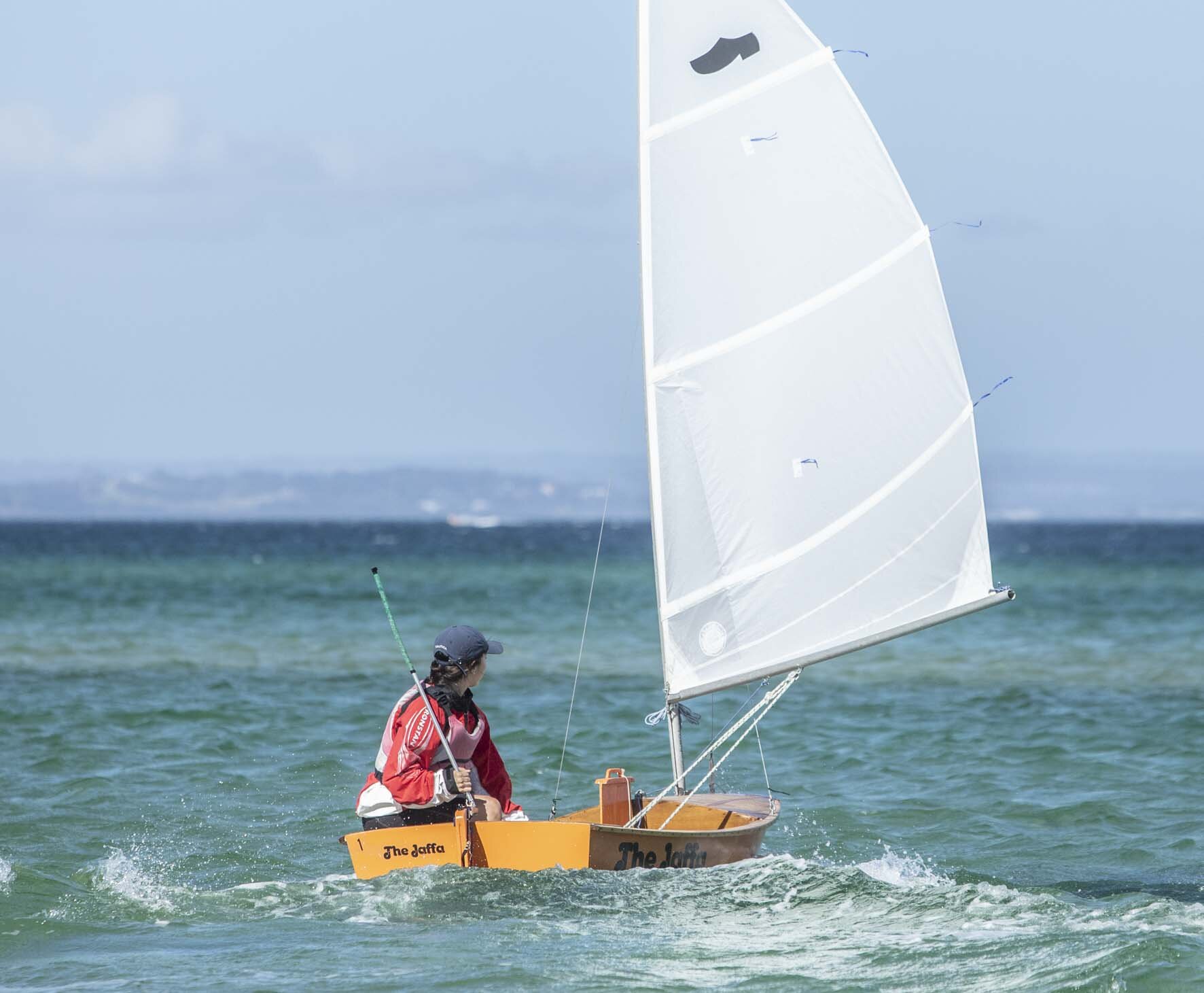
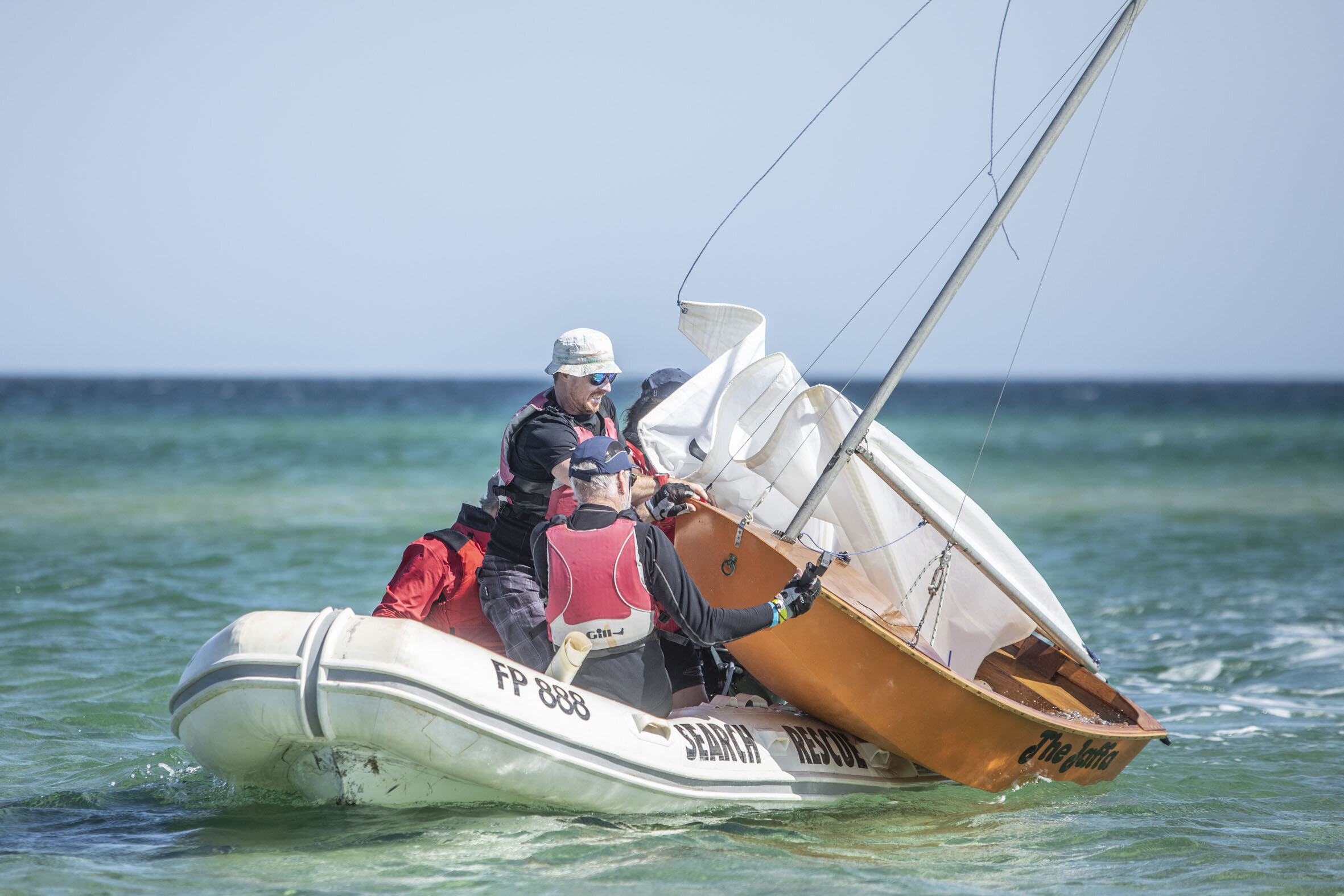
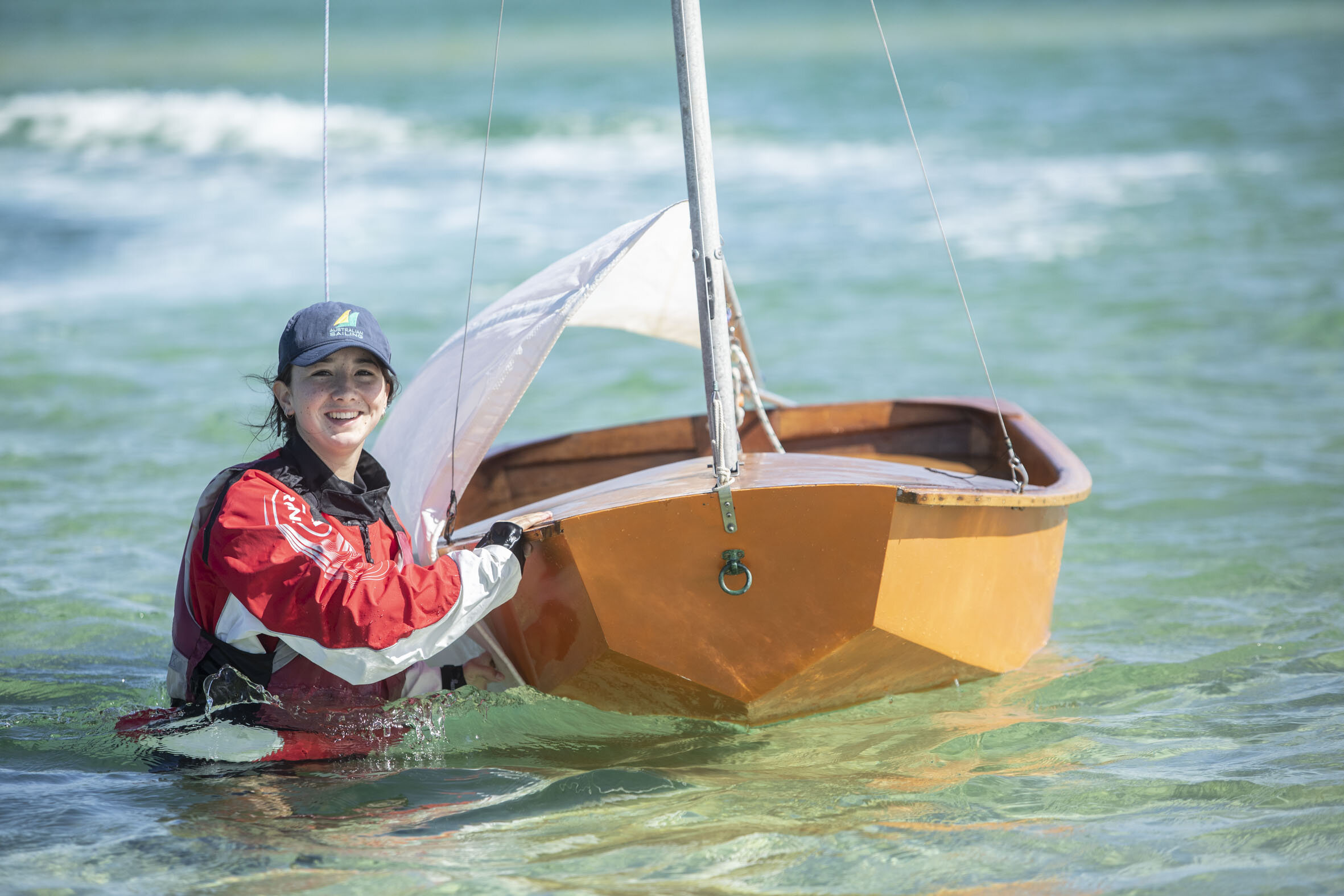
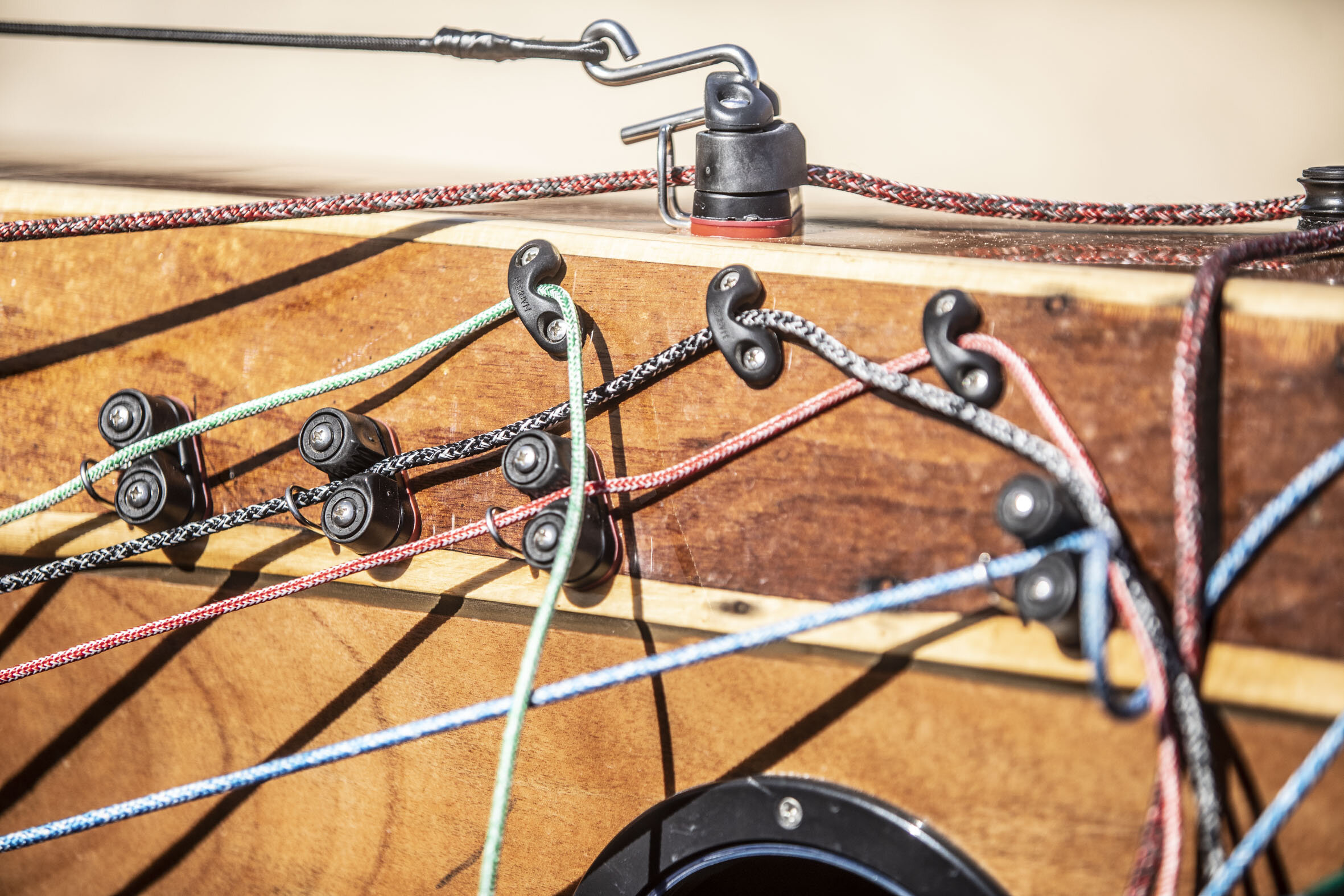
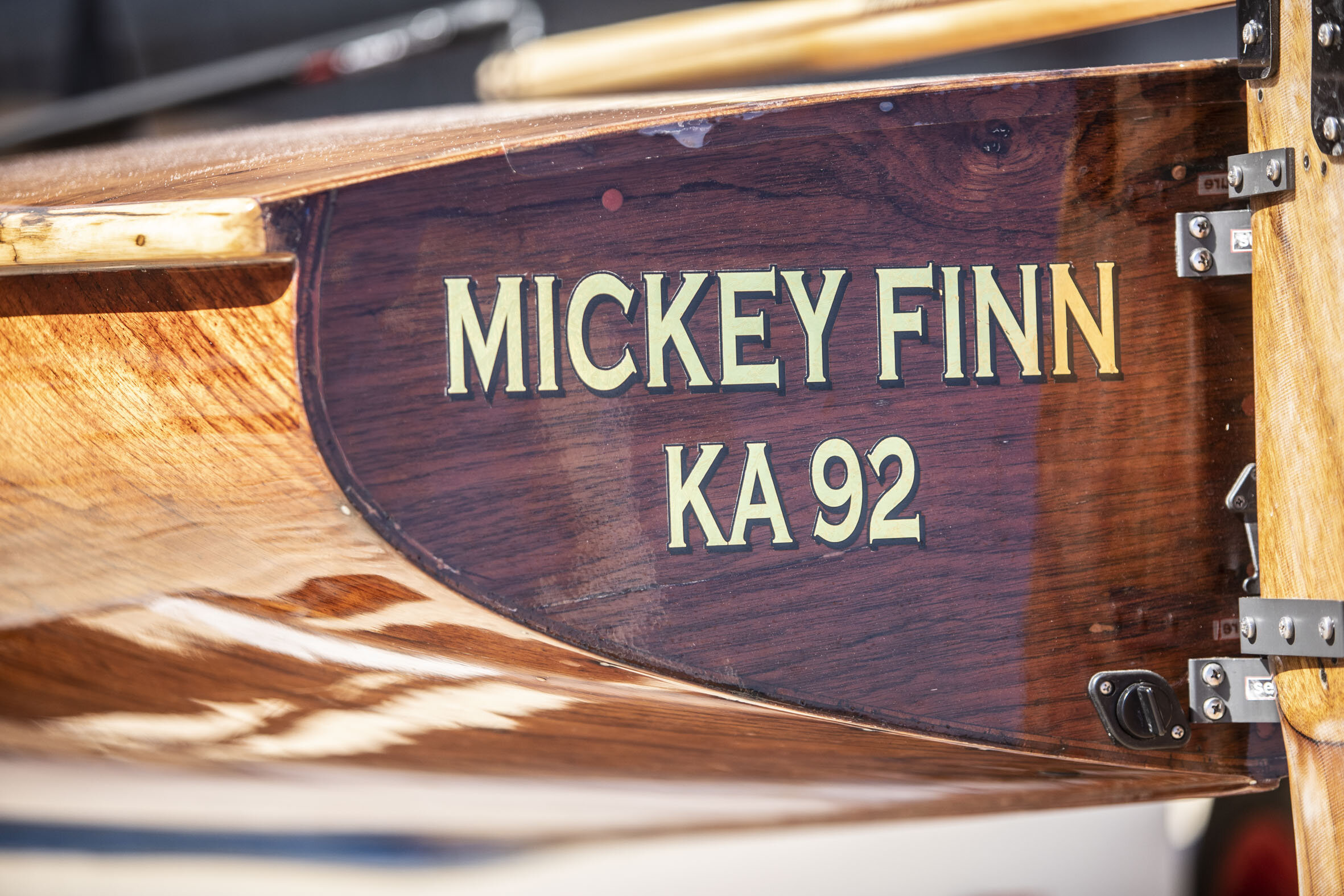
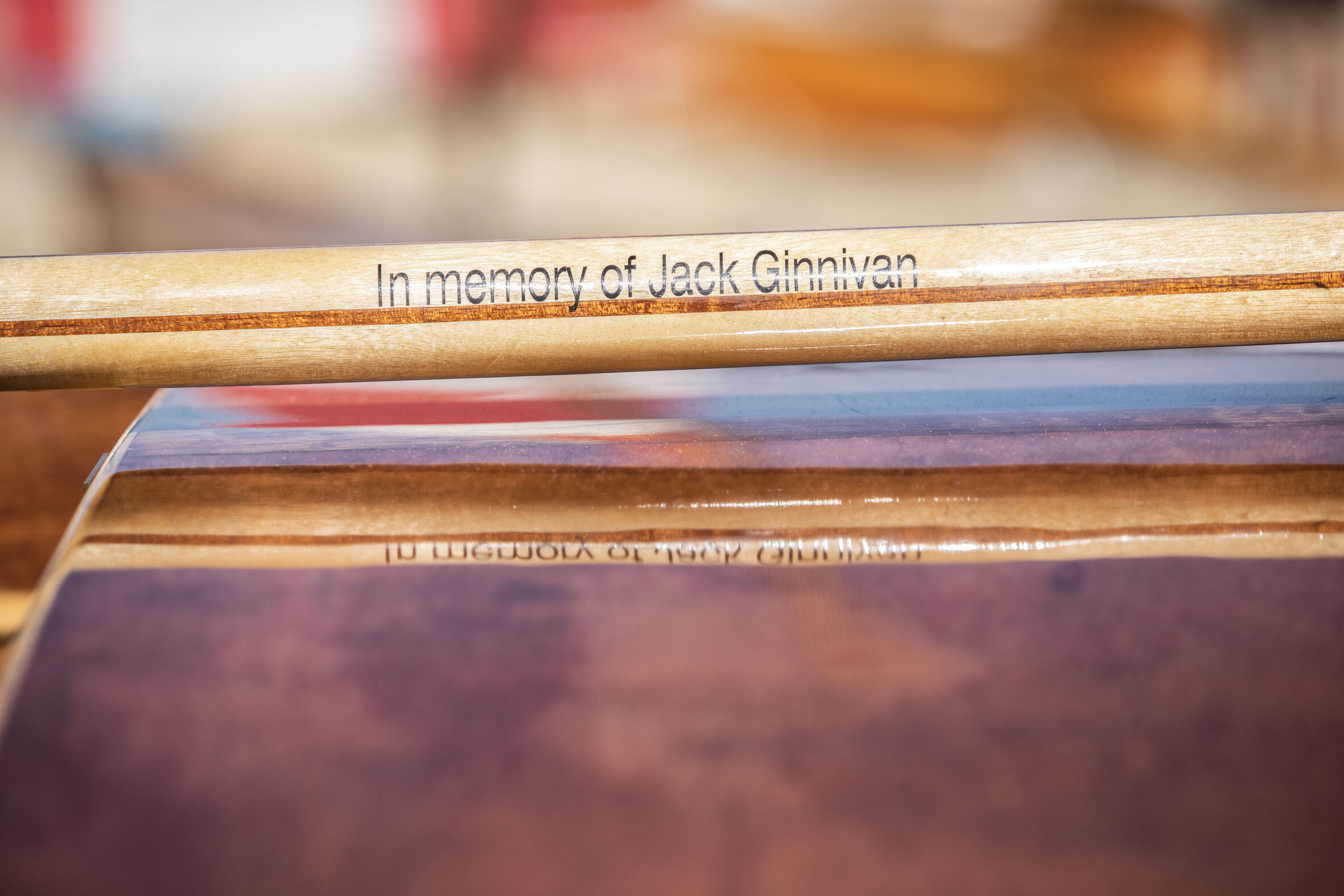
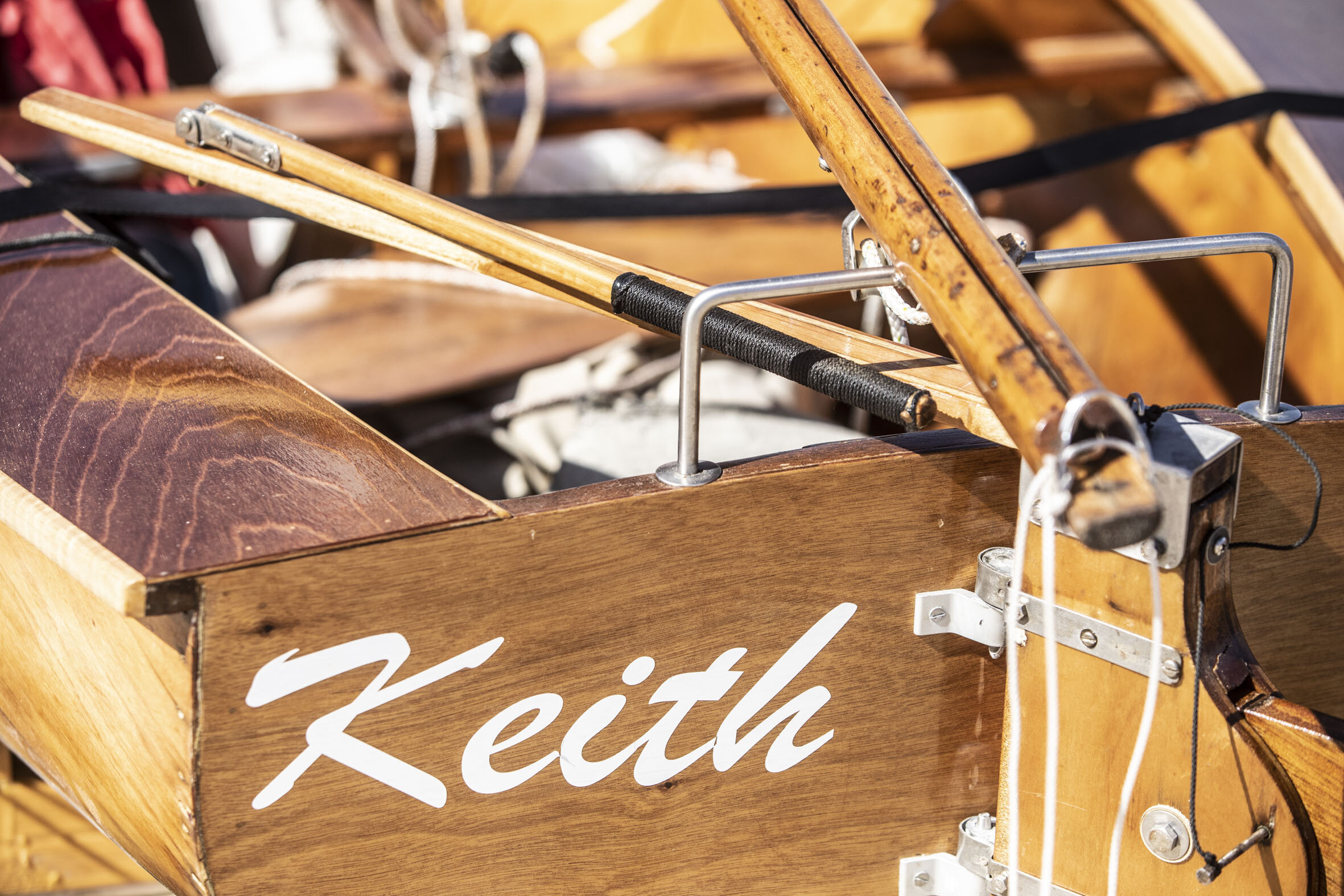

The most common question that seems to crop up when writing the articles for SWS, is where does the future of sailing wooden boats lie? The more I see and the more I hear about the events that are flourishing, the more I understand what seems to be working. Any successful event, or regatta, or class association, seems to flourish when there is a ground swell of enthusiasm bubbling up from below, created by those actually participating in the activity rather than the powers that be (such as Royal Yacht Clubs) dictating the sort of event they want to hold. In a way it reminds me of the famous quote by Antoine de Saint-Exupéry
“If you want to build a ship, don’t drum up the men to gather wood, divide the work, and give orders. Instead, teach them to yearn for the vast and endless sea.”
Down at Chelsea Yacht Club last Saturday there was plenty of yearning for the endless sea! Congratulations to those who made it all happen!
Thanks to Andrew Ford and Stephen Fankhauser from the Chelsea Yacht Club for inviting SWS to the event.

